
- 35mm Lenses
- Camera Reviews
- Point and Shoot

Olympus Trip 35 – Camera Review
Josh solomon.
- October 3, 2016

As enthralling as photography can be, long days, months, and years spent shooting can wear you out. In the worst case, it can lead to a photographic malaise that can dismantle even the most well-built minds from the inside out. It can render the best shooters incapable of even the simple task of pressing a shutter button. It’s shooter’s block, our equivalent to writer’s block, and it hit me hard over the summer.
I jumped out of bed one morning full of energy, ready to take on the world with my trusty Nikon F and Leica M2. But instead of plunging into a world filled with beauty, intrigue, and possibility, I found my surroundings cold, ugly, and indifferent. The images I tried to form seemed trite and overplayed, and I soon lost confidence in my ability to make a decent picture. Even the storied reputations of my F and M2 failed to inspire me. Every time I peered through their viewfinders I saw nothing but dust in the pentaprism and emptiness between the framelines.
Sufficiently depressed, I decided to stay home and put my cameras on the shelf. And it was while I was lying face down on a pillow listening to the opening lines of Chicago’s “Hard To Say I’m Sorry” that I realized I did, in fact, need a little time away. But I didn’t need a full-on vacation from the hobby itself – no, that would be too drastic. I just needed a change from the manual cameras that sat on my shelf. I needed an easier camera, and I had a feeling one camera in particular could fit the bill – the Olympus Trip 35.

The Olympus Trip 35 is a camera I’d heard a lot about but had never tried myself. Its reputation for ease of use and high quality seemed the perfect cure for my shooter’s block. And if the Trip 35 was the prescription, the Pasadena Camera Show was the pharmacy. There I found a beautiful Trip 35 for an absurdly low price, bought it, and quickly threw it in my bag.
One would think the Olympus Trip 35 would seem out of place next to legendary cameras like the aforementioned Nikon and Leica, but it actually fits right in. This camera, although not as capable as the other two, holds an equally lofty place in photographic history. Just as the F and the M defined the SLR and rangefinder genres respectively, the Trip 35 defined the point-and-shoot game. More impressive still, the Trip 35 actually outsold the Nikon F and the Leica M2 by millions. Take that, fanboys.
Olympus achieved these massive numbers by appealing to the casual shooter rather than pro photographers, specifically focusing on the new generation of moneyed vacationers. Racing from landmark to landmark and airport to airport, these sightseers simply lacked the time and interest needed to learn the boring particulars of photography required to operate a camera. Instead, they required a camera that was simple to use, but sophisticated enough to beautifully capture their memories.
Good design marries aesthetics to functionality, and the the camera gods couldn’t have picked a better company to bring the Trip 35 to life. Olympus’ design house, fresh off the ingenious half-frame Pen F, struck gold again with the Trip. The design is classic Olympus; clean-cut lines and an impossibly small form factor, the Trip wastes no time and gets straight to the point. It’s as well designed as any machine of its day, more impactful when we recall that the Trip came of age in an era where cameras were still fully mechanical, save for the occasional battery powered light meter. Automation seemed a distant (and expensive) fantasy, so when Olympus created a genuine auto-exposure camera out of primitive nuts and bolts, the world took notice. This was in no uncertain terms an engineering miracle.
The Trip 35 accomplishes this sorcery by determining the amount of light that enters a Selenium photo cell surrounding the lens, and choosing a correct aperture based on this reading. The camera then chooses a shutter speed of either a 1/200th or 1/40th of a second and we get a perfect exposure. When the camera’s incapable of making an acceptable exposure, a little red flag shows up in the viewfinder and the shutter locks out. The magic of this system is that it takes all exposure-related worry out of our minds. We don’t have to agonize about aperture, shutter speed, or even battery life, a godsend for vacationers and anxious photo geeks.
But before we experience it, it’s quite easy to question the Trip 35’s simplicity. After all, how accurate could a camera this old and primitive be? And could the lens be good enough for our 21st century eyes? As I drove home from the camera show, my new Trip in the passenger seat next to me, these questions rolled through my mind. I really needed this camera to be decent, if I was to pull out of my photographic death spiral.
Just then, I received a text message from my sister. Can you pick up some pork buns in chinatown? thx. With this, I had my mission; buy some pork buns, shoot the Trip, and see if this ancient camera could walk the walk.
The first thing I noticed was its build quality. Comprised of metal and plastic, the Trip 35 is solid, but never heavy; lightweight, but never flimsy. The only disappointing aspect of the camera’s feel is its film advance wheel. A dinky plastic affair reminiscent of disposable cameras, this lackluster cog is forgivable when we remember that the Trip was built to be a consumer-level camera.
Peering through the viewfinder showed bright frame-lines with tick marks both for up-close shots and for landscape shots. These are helpful in view of the Trip’s lack of automatic parallax correction. Having used fancy Leica , Nikon , and Contax rangefinders renowned for brightness and clarity, the Trip’s viewfinder beats most of them. Its relative simplicity is a nice change from the cluttered and overly complex viewfinders of other machines. The Trip 35 also features a small window in the bottom right of the VF (affectionately dubbed the “Judas Window” by Trip 35 disciples) which shows both the chosen aperture and exposure setting on the camera.

So far, so good. But how was I to determine focus? I quickly realized that the Trip’s a scale-focus camera, which is not ideal for accuracy. But before I started feeling like Olympus left me all alone and helpless, I realized that they were kind enough to provide some handy distance-measuring tools. Settings along the lens barrel show a picture of one person for portraits, two people for pictures of two people, three people for group pictures, and a mountain symbol for everything in the distance, including mountains. I stopped hyperventilating, and realized that, for a point-and-shoot camera, this is more than enough. And for all you nitpickers, Olympus also included precise distance measurements in both meters and feet on the underside of the lens. Phew.
Once shooting the Trip started to shine, and I was easily able to focus on exactly what matters most in photography – composition. From the first frame I found myself joyfully snapping away at whatever tickled my fancy, even though I didn’t know what aperture values and shutter speeds the Trip 35 was choosing. Frankly, I didn’t give a damn. All that mattered to me was finding different angles, new ways to play with light, and how to capture Chinatown’s unique charm. It felt like with each and every frame, the Trip was dissolving my shooter’s block more and more, and I wanted to just keep shooting.
So the little Olympus and I danced through Chinatown’s colorful landscape, happily snapping away. In no uncertain terms, it was the most fun I’d ever had with a camera. Even though the heat of the afternoon beat on my shoulders and the sweat sizzled on my brow, the Trip 35 and I ran through the city without a care in the world. The streets led us to the door of a steamy Chinese restaurant, then a pile of steaming pork buns, then back to the equally steamy interior of my car. I didn’t care how long the journey took or how much fluid I lost in that heatwave. It seemed like I sweated out my shooter’s block, and I eagerly raced home to deliver the buns, and develop the film.
But something was nagging me about the camera the entire way home; the focus issue. Had I gotten the focus correct for every shot? How was I to trust those markings? How could I possibly live without a focusing aid? Anxiety began to rear its head again and I had to stop myself from speeding over to a one-hour photo lab to assuage my fears. I gripped the steering wheel tight and told myself to trust the Trip. Besides, I still had a job to do. These pork buns weren’t going to deliver themselves.
After delivering and munching on said pork buns with my contented sibling, I decided to get the roll developed and scanned. My fears were partially founded. Some of the shots, especially photos of close subjects or darker scenes, came back fuzzy due to a combination of my poor distance estimation and the nature of the Trip’s exposure and focus systems. While the Trip automatically helps achieve sharp focus by selecting a smaller aperture for greater depth-of-field, this is only possible in bright light. As things get dark, the ability to shoot at a smaller aperture quickly disappears. In these situations it can be really difficult to nail correct focus. One minor consequence of this is that shooters with an affinity for portraiture and those sweet bokeh balls will probably be disappointed by this camera.

But expecting creamy bokeh and close range performance from the Trip 35 (or most point-and-shoots for that matter) is like expecting a ‘93 Honda Civic to outpace a Tesla Model S. It just won’t happen, and trying will lead to frustration. But just like that Honda, if you regard the Trip 35 as a reliable machine good for an occasional joyride, it will never disappoint. The Trip 35 is capable of a great many things , but we must be careful to recognize and respect its own limits.
When we get the focus right, the Trip’s fantastic 40mm F/2.8 Zuiko lens delivers in spades. The lens is a front-focusing Tessar type lens, which means that it’s very simple and very sharp, and it retains this sharpness edge to edge without chromatic aberration, spherical aberration, or any kind of distortion due to its simple optical formula and Olympus’s masterful execution. The lens’ quality even overcame the limitations of expired film, and ended up giving me some great results.
For whom is this camera best suited? First and foremost, the Trip 35 might just be the perfect camera for the casual photophile. Olympus built this camera to document the daily adventures of the everyman, and the Trip does this beautifully. And for experienced shooters, the Trip 35 can be a great way to break free of shooter’s block, or inject our shooting with something fun and carefree. It emphasizes the art of composition rather than the cold calculations of exposure, but even more importantly, it reminds us to relax, have a pork bun, and not take ourselves too seriously.
Want to try the Trip 35 for yourself?
Buy it on ebay, buy it on amazon, shop b&h photo’s vintage gear, follow casual photophile on facebook and instagram.
[ Some of the links in this article will direct users to our affiliates at B&H Photo , Amazon , and eBay . By purchasing anything using these links, Casual Photophile may receive a small commission at no additional charge to you. This helps Casual Photophile produce the content we produce. Many thanks for your support. ]
Share this post!
- Click to share on Facebook (Opens in new window)
- Click to share on Twitter (Opens in new window)
- Click to share on Reddit (Opens in new window)
- Click to share on Pinterest (Opens in new window)
- Click to share on Tumblr (Opens in new window)
- Click to email a link to a friend (Opens in new window)
- Camera Review
- film camera
- olympus Trip

Josh Solomon is a freelance writer and touring bassist living in Los Angeles. He has an affinity for all things analog. When not onstage, you can find him roaming around Southern California shooting film and humming a tune.
29 comments
Very nicely done.
Great review of the Trip! This is the camera that lured me away from Lomography and the whole low-fi aesthetic. While the metering system is somewhat primitive and the zone focusing can be imprecise, especially in low light, it’s obvious that all the money and work went into the lens. In the right circumstances it’s absolutely tack sharp. Once I started getting sharp images from my Trip, the Lomo LC-A+ and the Holga started looking a lot less appealing.
The Trip definitely has some big limitations but on its own terms it’s a great camera.
Here’s my Trip album on Flickr to get an idea.
https://www.flickr.com/photos/21156896@N07/sets/72157645739914959

Thanks for adding your Flickr album. It’s great for people to be able to see what these cameras can do in varied situations.
Thanks so much! Those images are fantastic; they really showcase what that lens can do. Funny you mention the LC-A+… ?
Thanks! The LC-A+ was the camera that got me back into using film after an extended dalliance with digital photography. I used it really heavily for about 2 years before becoming curious about other cameras. The fact that the Lomo is also a zone focuser made it very easy for me to switch to the Trip and the XA2.
Great write up Josh, and really nice album Neilson! I had to do a double take on some of those shots, especially the close up portraits, realizing that you had used a Trip.
I agree, what a great review and some fine shots on that flickr gallery. I’ve just bought my 50th Olympus Trip 35 and am steadily rebuilding them from head to toe. I’ve posted some reviews and other helpful reviews on my site https://trip35.co/
Great pictures from the Trip. You got to love these little cameras!
The Trip 35 was *made* for landscapes and group photos in good light outside. It’s really dang good for those things. For everything else, not so much! But like you, on a day when I’m just out and about shooting stuff, I find the Trip 35 to be big fun.
My last outing with my Trip 35: https://blog.jimgrey.net/2015/04/20/olympus-trip-35-revisited/
If I ever get on an airplane again I think I’ll be bringing this camera… We’ll see. Josh and your post have helped convince me. Thanks for sharing.
Great review of one of my favourite cameras and one of the best free cameras I’ve ever been given. The quality you can get from this little package has always astounded me, this is an example taken with just bog standard Poundland special film (Agfa Vista 200) https://the6millionpman.wordpress.com/2016/09/30/cardiff-bay-sunset-3/
And yet again I confess to being an Olympus fanboy.
Beautiful colors and range on that.
Great article Josh, and thanks for publishing it James. There wasn’t a link, but I started the Olympus Trip 35 users group on Facebook, here is the link. P.S. A few famous photogrpaphers in the group.
http://www.facebook.com/groups/OlympusTrip35
Hey my friend! Thanks for commenting. We did include a link there, it’s in the third to last paragraph where it says the Trip is “capable…” etc.
And for anyone down here in the comments, do check out the FB group. Amazing talent there shooting with all kinds of Trips.
The Trip Flickr group is worth checking out too. Lots of good stuff there.
https://flic.kr/g/5jsssh
Great write-up! I have three of these and, while I’m by no means a great photographer, I do love the pick-up-and-go nature of the Trip 35. For those who are interested, I spent an entire day refocusing the lens on one of mine;
https://teeritz.blogspot.com.au/2014/04/re-focusing-lens-on-olympus-trip.html
Almost drove me nuts!
That post is scary. You’re a brave man.
Bought a Trip after reading a recommendation by Ken Rockwell. At the time I thought I only ever needed one camera – an FE – and I had one. However, the Trip is great for other things. As you say, the pictures are so sharp. And its so easy to use.
I love my Trip 35. Fantastically sharp lens and incredibly easy to use! The zone focusing took a bit getting used to and I do still occasionally misfocus, but when that happens I embrace my inner William Klein. Also, my copy came with a lens cap and zipped up in a bag so the selenium is not at all worn out and the AE is spot-on. I actually trust shooting slide film in this camera more than any of my all-manual cameras!
Hi! Thank you so much. I am seriously considering to buy a Trip. I want to go traveling and bring a good camera. Do you think this one will do? And some people say it’s not really for taking photo’s in the dark/on parties. Are they right?
Thanks again 🙂
Hey Nikki! The Trip is the perfect camera for travel and casual outdoor shooting IMO, but it does suffer in low light without a flash. A little compact flash will help, and it does have a manual aperture override for accurate flash exposures.
If you’re going to be spending lots of time indoors I would suggest either picking up a cheap P&S with a built in flash, or upgrading entirely to a compact SLR/fixed-lens rangefinder with a fast (f/2 and under) lens for low-light shooting without a flash. Hope this helps!
Hello Nikki, I am the Admin of the Olympus Trips 35 Users Group, I recommend you join to get advice, and there are trustworthy sellers in the group.
See the website link below my comment
I’ve recently picked up aTrip 35 and have been very pleasantly surprised by the ease of use and picture quality. I even tried some low light close shots and had better results than I expected. Tip #1: use 400 speed film to increase versatility. You get more depth of field in any situation and therefore more focussing accuracy. You will also hold off the “red flag” for a stop or two. Tip #2: learn how to guesstimate the zone distances as accurately as possible. If you’re shooting close-up in lower light try to nail the actual distance e.g. set the lens on 1 meter and try to be 1 meter away. Use a tape measure at first so you can see what the distances look like. As the light falls or distances get closer then more accuracy is required from the photographer. Tip #3: remember that you can press the shutter button half way down to lock the exposure. Meter off a mid-tone then recompose and shoot. This will help with back lighting and other tricky light. Tip #4: try to shoot within the limits of the design and you will get good results. The Trip 35 was meant for family holidays and a whimsical approach to photography. If you require critical focussing or metering the Trip was never really designed for that. Enjoy!

Hi, Josh. Great writing. I enjoyed reading your review and laughed so much at the pork bun adventure! Thanks!
Thirty-seven years of shooting film and the Trip 35 was a camera I’d always ignored for being ‘too simple’. I spotted one in a local charity shop last week that was cased, boxed and in lovely condition and I got it for next to nothing. I ran half a roll of FT-12 ASA50 cinema film through and the results were far better than I expected. I started out on Olympus all those years ago (still use them) but I’m a bit ashamed of myself for ignoring this little gem. My 8 year old is just starting to take an interest in photography and this is going to be ideal for her.
Thanks for a great review and for pointing out a couple of little features I hadn’t spotted.
Quick pedantic note: In virtually everything I’ve seen online about the Trip 35, there’s one thing that nobody ever seems to say:
The Trip 35 is essentially the full-frame version of the earlier half-frame Pen EES and EES-2.
I had an EES-2 and it was a great shooter for an inexpensive camera. It worked exactly the same way as the Trip: the selenium meter around the lens chose one of two shutter speeds or raised a red flag if there wasn’t sufficient light; it had a four-icon zone focus lens; there was one manual speed for flash along with adjustable f-stops when not in Auto. Of course, the Trip had a different focal length lens to produce a full-frame image, but I suspect it’s of a very similar design to the EES-2’s. And note that the Trip 35’s top plate includes the EES-2’s hot shoe, along with the back cover/rewind knob from the Pen series (and frame counter from the Pen F series), and the viewfinder is essentially the same as the EES-2’s.
My point is: the Trip 35’s super-successful design wasn’t actually new, the camera was scaled up from the already successful Pen EES series.
Thank you… Now I’m on my way for fun an Mindfulness 🙂 A very brilliant text who give me interests and energy. Thank you 🙂
Just bought one, trying it out tomorrow. I would suggest to buy a tripod and a self-release cord, set it to A and just set for the distance. I used to carry a 110 film camera back in 1977 and was taught photography back in 1981 from a WW2 vet. Warhol used a Pentax 35afm because he could set a high iso without flash.
Leave a Reply Cancel reply
New york city and the half-frame 35mm olympus pen d, the cinematic point and shoot – minolta p’s (freedom vista) review, olympus xa2 – point and shoot 35mm film camera review.

Browse Over 250+ Film Cameras Shop Now
Trusted By Over 30,000 Customers On Their Photography Journey Early Access
Free Worldwide Shipping on Orders Over £200 Learn more
- Seychelles (GBP £)

Returns & Exchanges
Hassle Free Returns Policy
Free Tracked UK Delivery
Tracked & Next Day Delivery
30 Days Guarantee
Market Leading Assurance
Free Worldwide Shipping
On All Camera Orders
Why the Olympus Trip 35 is a Classic Camera Worth Owning
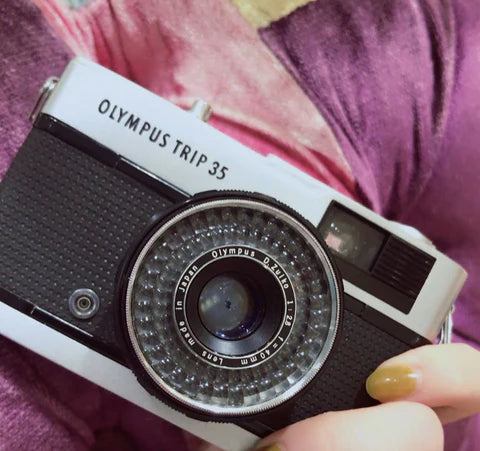
David Johnson | April 14, 2023

History of the Olympus Trip 35
Design and build quality.

Zone Focusing
Light metering, easy to use.

Affordable Price
Shooting experience.

Film Availability
Repairs and maintenance.
- Tweet on Twitter
- Share on Facebook
- Pin on Pinterest
Previous Next
Your cart is empty
Subtotal: £0.00 GBP
Free Delivery Service
UK & Worldwide Delivery
Reliable Delivery
Hassle Free Returns
Choose options
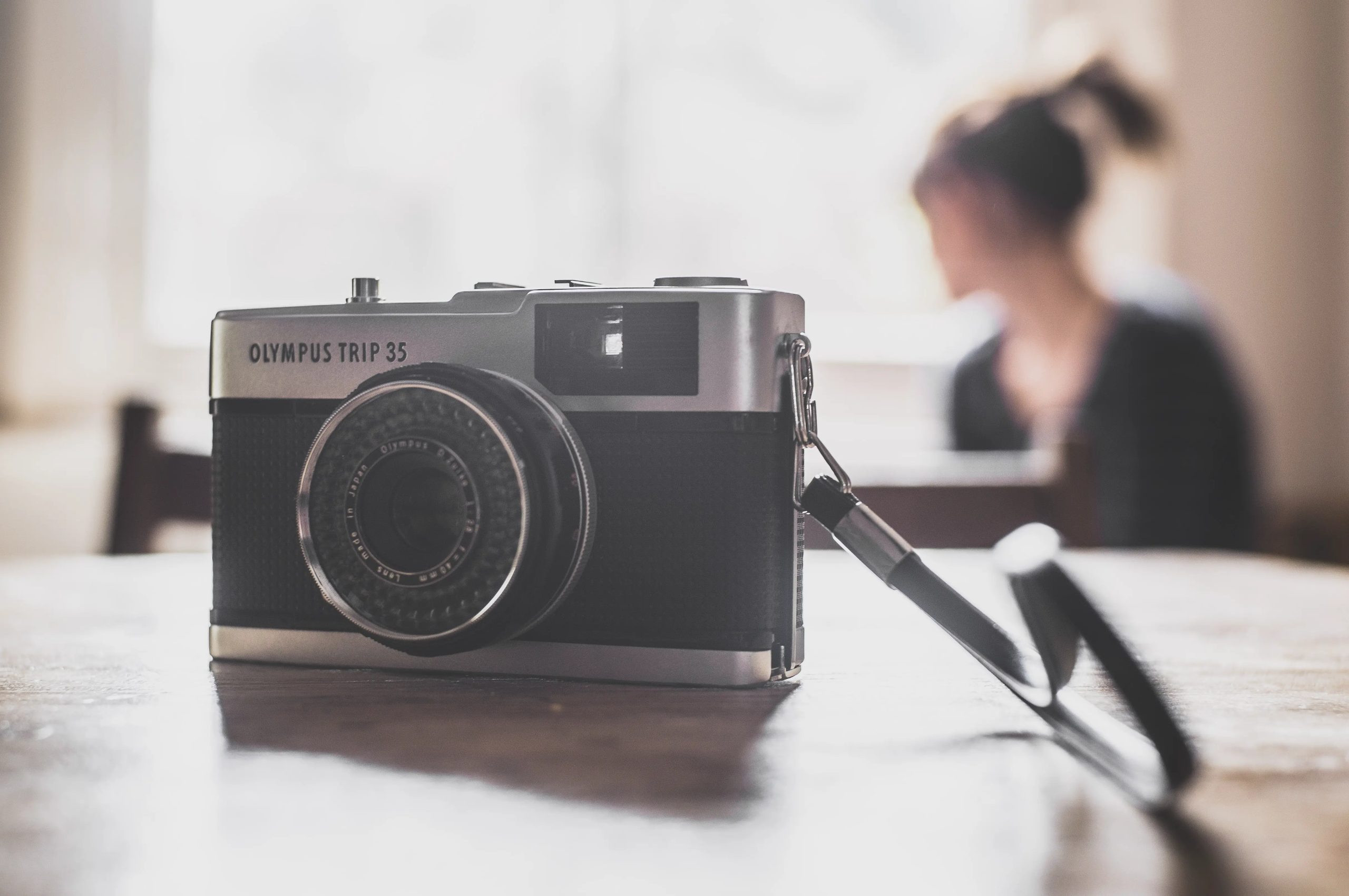
Olympus Trip 35 Review – A cult classic point & shoot
8 May, 2013
Post Categories:
Share this post:
I’m certainly not the first and I suspect I won’t be the last to write a little something about the Olympus Trip 35. I have read this camera had sales figures of around 10,000,000. Olympus used the ‘trip’ moniker on a lot of cameras subsequent to the one in question here, so who knows how many trip 35’s were sold? What is clear is that the number is vast! You only need to go on eBay and see how many are for sale at any one time. Just search for ‘Olympus trip’ on google and you will find entire websites dedicated to the things. This camera is a popular little snapper and has been since it hit the market in the late 60’s.
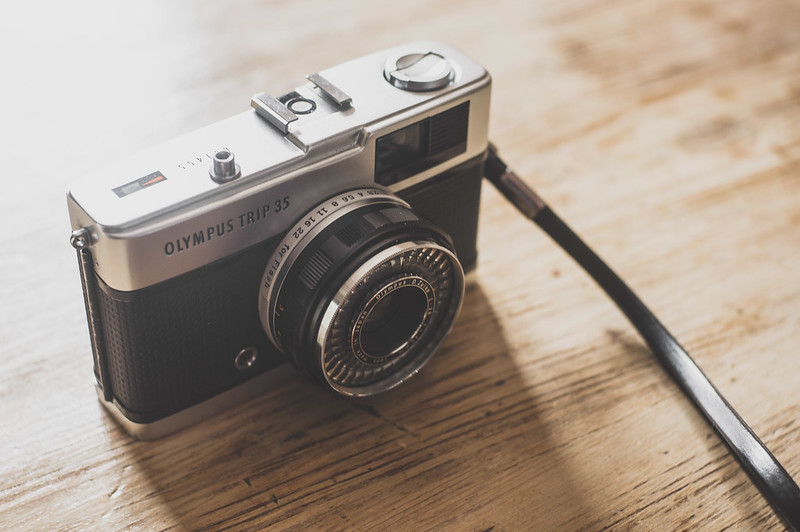
It’s production ran from 1967 through to 1984! It’s popularity was helped along by David Bailey and by the fact that the very simple 40mm lens is exceptionally high quality. It was touted as a camera that could take professional quality images yet is small and very easy to use … No wonder they sold so many!
The name “Trip” comes from the the idea that it was intended as a camera for taking on holiday. I guess this translates to a camera for everyone. And that it really is! This camera is a true point and shoot that even the most inexperienced photographer could use with little chance of failure. This is due to the slightly limited but very simple design and operation. The camera is almost entirely automated for all situations apart from shooting with a flash. Load the camera with a film between 25 and 400iso, set it as such on the dial around the front of the lens and you can let the camera do pretty much the rest.
The selenium cell based light meter effectively powers the cameras operation. With the camera set to ‘A’, based on the light hitting the meter it will choose the most appropriate aperture between f2.8 and f22. It will also choose either 1/40th or 1/200th for the shutter speed. If the amount of light isn’t adequate for at very least 1/40th and f2.8 it will simply prevent the photo from being taken. It tells you this is happening by popping up a little red flag in the viewfinder. If this happens it is intended that the user attach a flash.
If taken off ‘A’ and an aperture selected manually the meter and the flag are disabled and the camera set to shoot at 1/40th. The assumption is that a flash would be attached and that an appropriate aperture for the subjects distance would be selected. Of course it also means that as long as you are happy shooting a 1/40th you can just choose your own aperture and shoot without the little flag stopping you. This does lead to the camera being used more creatively and outside of the way it was intended but more on that later!
Focusing is achieved by selection of one of four possible preset distances which are denoted by four familiar pictures. A head and shoulders for the closest focusing and a picture of mountains for infinity. The second furthest focusing distance (denoted by three little people) is highlighted in red. The same red as the ‘A’. This is no accident, in daylight set the camera to ‘A’ the the three little red people and you can shoot away with little worry of out of focus images.
This simplicity does make for a very enjoyable shooting experience, but with a little imagination the camera can be used (as previously mentioned) outside of the intended way.
The first little trick is quite an obvious one really. The camera can be tricked into over or under exposing by changing the film speed. Eg 200 ISO film in camera and up to 1ev of under exposure can be achieved by setting it to 400iso. You could of course also dial in up to 3ev of over exposure. An example of where this might be useful would be shooting a backlit subject eg a person stood in front of a window.
Another trick is for low light shooting. When set to ‘A’ low light shooting is somewhat limited. That pesky red flag rears its little head and a 400iso limit is a little low. As mentioned before though, the little red flag can be disabled, and if not using the lightmeter there is no need to worry about what ISO the camera is set to. So as long as you are happy at 1/40th you can put whatever ISO film in you like and manually select exposure with the aperture control. There are in fact many people who do this some of whom post in the Flickr group. It’s not something I have tried since resurrecting the camera… But I’m going to … And will post some shots when I get around to it!
So what’s all the fuss about? Surly there are more highly specified cameras that allow shooting in more circumstances without such limitations. Well yes, but it’s the simplicity that is the charm, combined with a superb lens and the fact that they so rarely go wrong it’s hard not to love this camera!
So that’s the Trip 35, a cult classic, incredibly simple to use, hardy, cheap as chips and packed with charm … Basically, buy one! Use it, love it!
Additional – I have done a ‘Through the viewfinder’ article on this camera which can be found here Through the Viewfinder – Olympus Trip 35
Some useful links: Help with dating your trip Instructions for repairing your trip 35 A possibly useful modification
Find more similar content on 35mmc
Use the tags below to search for more posts on related topics:
Contribute to 35mmc for an ad-free experience.
There are two ways to contribute to 35mmc and experience it without the adverts:
Paid Subscription – £2.99 per month and you’ll never see an advert again! (Free 3-day trial).
Subscribe here.
Content contributor – become a part of the world’s biggest film and alternative photography community blog. All our Contributors have an ad-free experience for life.
Sign up here.
About The Author
Trip 35 and some very cheap film and Connie. on Olympus Trip 35 Review – A cult classic point & shoot
Comment posted: 23/05/2013
Leave a Reply Cancel reply
Your email address will not be published. Required fields are marked *
Save my name, email, and website in this browser for the next time I comment.
Notify me of new posts by email.
Olympus Trip 35 on Olympus Trip 35 Review – A cult classic point & shoot
Comment posted: 24/05/2013
Dave on Olympus Trip 35 Review – A cult classic point & shoot
Comment posted: 09/04/2015
Hamish Gill replied:
Yeah, thats what I'm saying ... Put 200iso film in and set it to 400 and it will under expose it by 1ev Put 200iso film in and set it to 100, 50 or 25 and it will over expose buy 1,2 and 3ev respectively... Thats right isn't it??
Christos Theofilogiannakos on Olympus Trip 35 Review – A cult classic point & shoot
Comment posted: 16/10/2015
Huh, that's interesting! I didn't know that ... Very clever little cameras really!
Neilson on Olympus Trip 35 Review – A cult classic point & shoot
Comment posted: 25/02/2016
5 Frames With An Olympus 35 RC - by Julian Higgs - 35mmc on Olympus Trip 35 Review – A cult classic point & shoot
Comment posted: 03/05/2018
Olympus Trip 35 review - Kosmo Foto on Olympus Trip 35 Review – A cult classic point & shoot
Comment posted: 15/04/2019
Camera Review Blog No. 06 – Olympus Trip 35 – Alex Luyckx | Blog on Olympus Trip 35 Review – A cult classic point & shoot
Comment posted: 26/11/2019
Robert Gerrish on Olympus Trip 35 Review – A cult classic point & shoot
Comment posted: 10/04/2020
David Wignall on Olympus Trip 35 Review – A cult classic point & shoot
Comment posted: 11/11/2021
Leave a Comment
Related Posts

13 April, 2024
By Molly Kate

25 March, 2024

7 March, 2024
By AndreArma

3 March, 2024

Photography & Projects
Looking for some inspiration, or just want to flick through the project work and photos?

Reviews & Experiences
If you're looking for photography equipment and peripheral reviews, this is the place to start!

Theory & Reflections

Tutorials & Knowhow
If you want to learn or discover a new technique, build on your skills, or be inspired to have a go at a bit of DIY or camera modification, then you’re in the right place.
Contribute to 35mmc
Paid Subscription
£2.99 per month and you’ll never see an advert again! (Free 3-day trial).
Subscribe here
Content contributor
Become a part of the world’s biggest film and alternative photography community blog. All our Contributors have an ad-free experience for life.
Olympus Trip 35
The Olympus Trip 35 is a fully-automatic 35mm compact camera , manufactured by Olympus from 1967 [1] to 1984, during which time over ten million units were sold, [1] though this oft-quoted figure is likely to have included later plastic-bodied Olympus cameras with Trip branding, as the original Trip 35 had serial numbers going up to around 5,400,000. [2] The auto-exposure mechanism is effectively solar-powered by a selenium cell surrounding the lens, and consequently the camera runs without batteries. Until June 1978, the shutter button was silver-coloured metal. After that date, all Trips had a black plastic button.
- 1 Auto-exposure mechanism
- 3 Viewfinder
Auto-exposure mechanism
With the aperture ring set to "A", the camera operates as a program automatic with a working EV range of 8.32-17.4 at ASA 100. [3] Half-pressing the shutter-release button locks the exposure with both the aperture and shutter speed (of which there are only two, 1/40 and 1/200s) fixed by a delicate but accurate mechanism. As explained by one repair page ,
The combination of aperture and shutter speed that the exposure mechanism chooses depends on the amount of light available. The precise amount of light that triggers a change of the shutter speed is not documented in the user manual, but it is believed to be around EV 13. When brightness of EV 13 or more is detected, the Trip 35 will increase the shutter speed to 1/200 sec in preference to using a smaller aperture, and use a narrower aperture as light levels increase from there, presumably to avoid the diffraction effects that affect all 35mm cameras below f/11. [4] Below EV 13, it will use the 1/40 sec speed and widen the aperture for lower light levels. The camera will refuse to fire if there is not enough light, with a red plastic flag appearing simultaneously in the viewfinder. This mechanism makes it impossible to make the error of shooting with the lens cap in place.
When the aperture is set manually (primarily for flash photography), the shutter speed is set to 1/40th of a second. However, the meter is still active even in this "manual" mode. Setting the aperture manually merely sets the widest permissible aperture, and the auto-exposure mechanism may still choose to set a smaller aperture than this if it sees fit. [4]
Other than this, the camera offers no controls for setting exposure manually, though one can easily set exposure compensation by changing the film ASA dial to a higher or lower value.
The Trip 35 has a 40mm f/2.8 Zuiko non-interchangeable lens, with four elements in three groups. Ken Rockwell suspects this to be a front-element focusing Tessar . [5] This lens has a reputation for being extremely sharp, even in the corners; in Rockwell's tests, Costco-scanned Fuji ISO 400 print film loaded into this camera out-performed a Canon 17-40 f/4 L lens in the corners. [5]
The lens provides simple zone-focusing with 4 cute distance symbols marked on the top-left of the lens. These correspond to the real distance markings on the underside of the lens: 1 meter, 1.5 meters, 3 meters, and infinity. Filter ring is 43.5mm.
The viewfinder is an albada-type, with parallax markings for closer focusing. There is a second, very small window under this, nicknamed the "Judas window", which shows the current aperture setting and distance symbol which are on the lens barrel.
A small red flag will appear in the viewfinder if the auto-exposure mechanism decides there is not enough light and refuses to fire.
This camera's aperture blades (there are two blades) tend to be become sticky over time. Before purchasing an old Olympus Trip 35, ask the seller if the aperture is properly opening and closing at all values (f/2.8-f/22). This can be done by manually selecting each aperture value and half-pressing the shutter button. Otherwise, the lens unit would have to be disassembled and cleaned.
- ↑ 1.0 1.1 Olympus' history of EE-equipped cameras (archived)
- ↑ Serial numbers collected by the Olympus Trip Flickr group
- ↑ Specifications in the user-manual.
- ↑ 4.0 4.1 See the Trip 35 program graph , and the explanation in this thread .
- ↑ 5.0 5.1 http://www.kenrockwell.com/olympus/trip-35.htm
- Manual available from UCL
- Olympus Trip 35 group on Flickr
- A modification that allows a 1/200 shutter speed with manual aperture control
- Illustrated instructions for repairing a Trip 35
- Trip 35 in the Olympus Global History (archived)
- This is a trip at Classic Cameras by RaúlM.
- Lionel's Olympus Trip 35 page in French at 35mm-compact.com
- Olympus Trip 35 on www.collection-appareils.fr by Sylvain Halgand (in French)
- Flickr image
- Image by rick soloway
- Japanese 35mm viewfinder
- Image by Michele M. F.
- Image by Hans Jan Dürr
- Image by vincentnip
- Image by Ênio Resende
Navigation menu
Personal tools.
- View source
- View history
- List of Companies
- Community portal
- Recent changes
- Random page
- What links here
- Related changes
- Special pages
- Printable version
- Permanent link
- Page information
- This page was last edited on 7 November 2021, at 07:11.
- Text is available under GNU Free Documentation License 1.3 ; other licenses apply to photos.
- Privacy policy
- About Camera-wiki.org
- Disclaimers

Olympus Global Homepage
- History of Olympus Products
Olympus TRIP 35
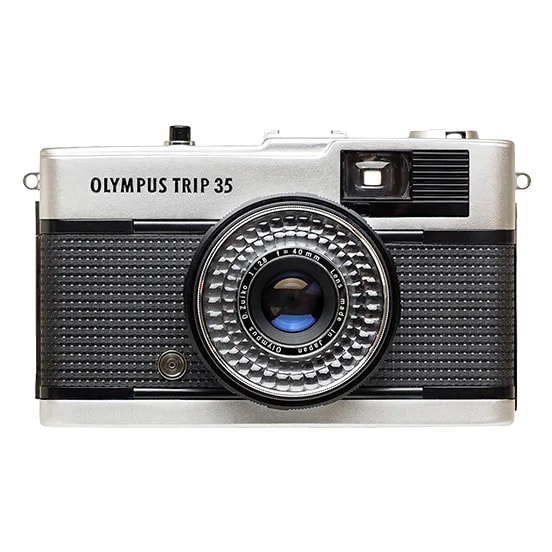
The Olympus TRIP 35 is a full-sized compact EE camera based on the Pen EES. It first went on sale in 1968. The name reflects its suitability as a convenient camera to take on trips. The TRIP 35 became very popular as a camera that combined ease of use, reliability and a low price with superb photographic performance. It remained a best-seller for over the next 20 years since its launch.
Olympus Trip 35 : The Most Classic and Trusty Camera
Almost fully automatic classic camera that can stun your brain with its sharp pictures. With it you can take very well exposed snaps and can manage with a fixed focus lens as well.
I accidentally found this camera (Olympus Trip 35) at 2nd hand camera shop and the price was very attractive. My friend also strongly recommended me to try this classic camera, so I bought it without hesitation.
The Trip is extremely simple to use. It has an auto-exposure system to control the lens aperture. You have only to set the right film speed and make sure that the adjuster is set to A, then you only simply focus the camera, and shoot!
The only thing that I don’t like it is that there is no shutter B mode. Anyway I tried shooting in low light condition but the result wasn’t really impressive.
If you want to use flash, after finish fitting the flash in the hot shoe you need to set the aperture ring to the correct f-stop. And don’t forget to move the aperture ring back to the “A” setting before using the camera again without the flash.

I think the result is great, in some ways better than the best digital cameras for street shot. —→ Just set it to A, focus and shoot!!!!
written by phiphu on 2010-09-12 #gear #review #camera #old #olympus #olympus-trip-35 #user-review
orange-sunkiss , srmarcus , gomi11 , kamiraze , i_am_four-eyes , pamelaklaffke , domyblue , phiphu & superlighter .

this nice camera can also thake some stunning night shots, simply load it with an 800iso film, turn the aperture ring to f2.8 shutter time in this case it's a fixed 1/40 sec.and it became a fab city night lights shooter and also perfect to immortalize your fave Idols where on stage! I've use it to shoot a live gig and it works very nice also with a 400 iso!

nice review. i have been lemming this camera for a very very long time!

@superlighter I will try some night shot soon and thanks for your suggestion. :)) @wallflowersforjane Thank you for your nice comment. :))

nice piece, i should have kept my Olympus 35.
Cool to see the review here. I got mine about 20 years ago when I needed a cheap camera to bring with me on military service (wasn't going to ris my SLR :) ). I wanted to get a cheap plastic throw away camera but the shop owner advised me to get this camera instead. It was just a little more expensive. And it has proven itself to be a great camera! And it's interesting to see how many are still around. If you want one, you will find one easily. I even ran into one in China. Though it was bricked into a wall. 8-O
Hey! May I know where u get that camera and the price you bought it for?:)
More Interesting Articles
Synesthesia #13: imagined album covers on instant film.

For this edition of Synesthesia, we highlight the community's instant photos with music selections including Asian Indie Rock, 80s Synth Pop, introspective jazz and world music hits.
CARRTOONS on Discovering Analogue Photography and Documenting his NPR Tiny Desk Performance with the Lomo'Instant Camera

Ben Carr, also known as CARRTOONS, talks with us about finding inspiration in the lo-fi aesthetic, and his experience documenting his NPR Tiny Desk performance with the Lomo'Instant Automat Glass camera.
Justino Blake’s Views From Lombok With Lomography Redscale Film

In this interview we catch up with film photographer and perpetual traveler Justino Blake and he shares with us his atmospheric Lombok landscapes shot on Lomography Redscale film.
Dreamy Bokeh With the New Petzval 55 MM F/1.7 Mkii

Jump outside of your comfort zone and take sensationally striking shots with the signature bokeh of the New Petzval 55 mm f/1.7 MKII! Available in Brass, Black Brass and Black Aluminium finish!
Get it in our Shop
Finnish Photographer and Youtuber Ari Jaaksi Tests Our Lomomatic 110 Camera

We sent our new Lomomatic 110 to Finland-based photographer and YouTuber Ari Jaaksi, who is here today to showcase his results and experiences! He created an honest review of the camera for his YouTube channel and shares his first 110 film shots with us.
Capturing Women's Football on Film with Raiyan Rafiq and Harriet Duffy

Raiyan and Harriet showcase their love for the beautiful game with their intimate and emotional snapshots of women's football on film, documenting scenes from the Euros, World Cup and Barclays Women’s Super League.
Making a Moment: Book Labyrinth by @pmonroe

In this edition of Making a Moment, Lomographer @pmonroe shares one of the first photos he ever uploaded to his LomoHome, which he took while exploring an old bookshop in Busan.
Your Quick Guide to Analogue Photography

Don’t know your 35 mm from your 110? Never heard of medium format? Confused about cross-processing? This guide gives a brief overview of everything analogue and you’ll be an expert in no time! Get a head start with film photography with our downloadable 12-page PDF guide.
Magda Kuca and Laertis Create a Trippy Music Video With the LomoKino

UK-based visual artist Magda Kuca used the Lomokino to create this fantastic music video for musician Laertis, inspired by an infamous LSD-fuelled bike ride taken by Albert Hofmann in 1943.
Multiple Exposures on LomoChrome Metropolis 120 Film by Architect Aitor Estévez

Architectural photographer Aitor Estévez created these wonderful multiple exposures on our LomoChrome Metropolis 120 film. See the photos and read about his process here!
Yaotomi Camera Store in Osaka Revisits 120 Format With the Diana F+

As part of our mission to save 120 film we invited our partners from Yaotomi in Osaka to shoot with the Diana F+ and share their experience with us. Check out their results and read their advice for other photographers using the Diana F+ for the first time.
Film Photography Day Deals are On!

In celebration of Film Photography Day there are tons of exclusive discounts and fab freebies available so shop now and enjoy sweet savings before it’s too late!
Available in our Shop
Kelvin Fadillah Wahyu Shoots with the Lomo LC-A and Lomography Film

Bandung-based freelance photographer Kelvin Fadillah Wahyu recently tried our Lomo LC-A along with our Lomography Color Negative ISO 400 and LomoChrome Purple Pétillant film for two creative photo shoots. Check out the photos and read about his impressions in this interview!
Get to Know Lomography's Full Instant Camera Line-Up

Browse Lomography's complete line of instant cameras with formats ranging from mini, square, and wide.
Jonathan Mok on His First Impressions of the Diana F+ and Love of 120 Film

Jonathan Mok is a California-based photographer and creator with a knack for medium format photography. We knew the Diana F+ camera would be a perfect photographic companion for him!
Find Out More About


Olympus Trip 35 – A Fully Mechanical Vintage Point and Shoot Camera (Review)
- May 31, 2022

Cool to see a new review of the old analog Olympus TRIP 35 (here on eBay) ! Analog Insights writes:
In today’s episode, Jules, Paul and I review the Olympus Trip 35 – a beautiful, compact 35mm viewfinder camera with built-in selenium light meter, an excellent 40mm f/2.8 Zuiko lens and an automatic exposure mode. The camera was first introduced in 1967 and built until 1984. According to most online sources, about 10 million units were produced in these 17 years, yet this number is likely to include later plastic versions with some form of Trip branding. Looking at the actual serial numbers, it is more likely that Olympus built around 5.4 million units of the Trip 35. Paul is also known as Trip Man (https://www.tripman.co.uk), selling refurbished classic Trip 35 cameras and accessories online out of England. He is a true authority and thus my perfect guide to this wonderful little camera. I cautiously reached out to him asking whether he would be available for a conversation via Zoom and he decided to spend a short spring vacation here in Munich. We used the opportunity to take the Trip 35 out on a photo walk in Munich’s Westend district shooting Ilford Pan 400 on a cloudy day. Paul could use the Trip 35 here in Munich as it was originally intended – as a light, easy-to-use travel camera that lets you explore the world, focus on your subject and nothing else. I also took the camera out together with Jules on a photo walk around dusk in a former industrial area. To match the beautiful golden light, we shot a roll of Kodak Gold 200 rated at ISO 160 and got some excellent results as well. Let’s get started and learn more about the Trip 35.
**This post contains affiliate links and I will be compensated if you make a purchase after clicking through my links.
As an Amazon Associate I earn from qualifying purchases
- previous post: a bit of everything…
- next post: Leica and Panasonic Signed Strategic Comprehensive Collaboration Agreement, and Develop “L2 Technology” as Symbol of the Collaboration
Olympus Trip 35 Film Camera Review
A cult classic, an engineering marvel, and an excellent value for a modern film photographer.
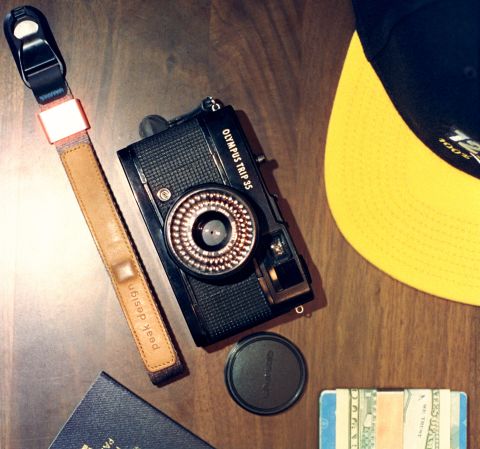
Olympus Trip 35 is one of the most popular 35mm film cameras ever produced. It’s affordable, it’s easy to use, the lens is sharp, it needs no batteries, and it’s compact.
Trip 35 uses a scale focus system, which may seem daunting at first — but it’s not difficult, and the camera has unique aides to help you get the right distance — I’ll explain below.
I’ll also cover all the basics of operation (including the auto and manual modes), lens performance, and build quality of this excellent entry-level Olympus film camera .
A Cult-Classic, Engineering Marvel, an Excellent Value for a Modern Photog
Why is Olympus Trip 35 a favourite of so many photographers?
Olympus Trip 35 is not an expensive camera. It has decent specs, but it’s not the sharpest, fastest, or most compact camera. Yet, it’s loved by many photographers of all levels today.
Back when it was introduced — over 55 years ago — it was a huge hit. The camera was in production for 15 years, having sold between five and ten million units .
Trip 35 sold for $59.95 at launch in 1968, or $530 in today’s money. But you may still find a working copy for $50 in 2024!
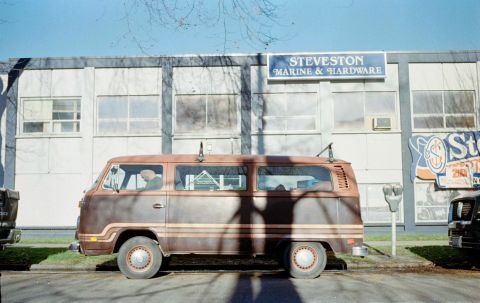
But it’s not just the price that makes this camera good. Trip 35s are built very well with lots of metal components and an excellent glass lens. They are a pleasure to hold and use. They’re nearly pocketable and don’t require any advanced photographic know-how or a manual to get started: if you know how to load film , you can use this camera.
🤓 Trip 35’s automatic exposure system that chooses an aperture and shutter speed by converting light energy into mechanical force is of particular interest to film nerds like me. Though many fancy cameras from the era used selenium light meters for aperture or shutter-priority modes, Trip 35 combined both functions in a relatively simple and remarkably reliable design .
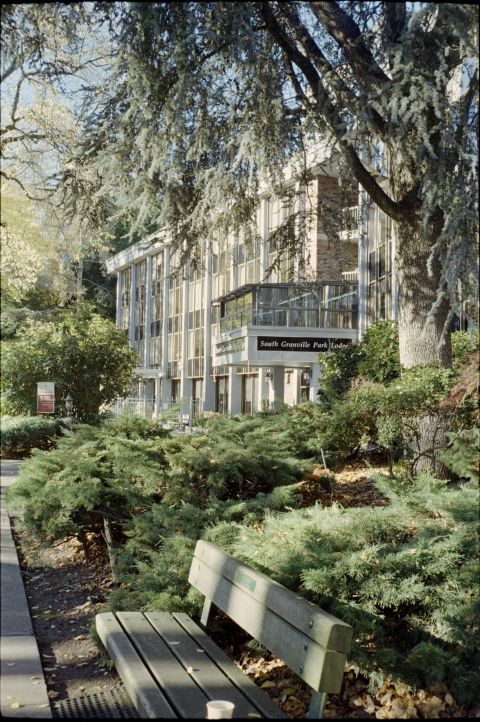
Olympus Trip 35 specs and features.
Trip 35 is a successor to Olympus PEN (namely, EES and EES-2) cameras’ excellent mechanical/optical design and portability.
My black paint brass Olympus Trip 35 version weighs 413g/14½oz , though some copies of this camera may weigh up to 20g lighter. The camera is nearly pocketable at 12×7×6cm (4 ½ ×2¾×2¼”), though it’s not the smallest .
Olympus Trip 35’s remarkably small (for the time) dimensions and ease of use are undoubtedly at the core of this camera’s name and ethos: a camera that’s easy to throw in a small bag or a pocket for a trip.
☝︎ Further reading: “ How to Travel With Film Through Airport Security .”
The leaf shutter on Olympus Trip 35 has two speeds: 1/40s and 1/200s. It can switch between the two automatically via the mechanical trap-needle system. In manual mode, Olympus Trip 35 only uses the 1/40s shutter speed. There are no Bulb and no self-timer modes.
The lens is a non-interchangeable Olympus D. Zuiko 40mm 𝒇2.8-22 (four elements in three groups). The closest focus distance is 1m/3ft. The lens uses an odd 43.5mm screw-in lens filter thread that can be adapted to the more common 40 or 46mm threads .
Fully automatic exposure (A) is controlled mechanically by converting ambient light energy via selenium cells (bubbles around the lens) into mechanical movements that modify the aperture and shutter speeds. The camera can be operated manually via the aperture ring around the lens, which will always trigger the shutter at 1/40s if not set to A. The exposure meter is operational between EV8 and EV17 ; it accepts films with ISO 25 — ISO 400 (which needs to be dialled in manually before shooting). No batteries needed.
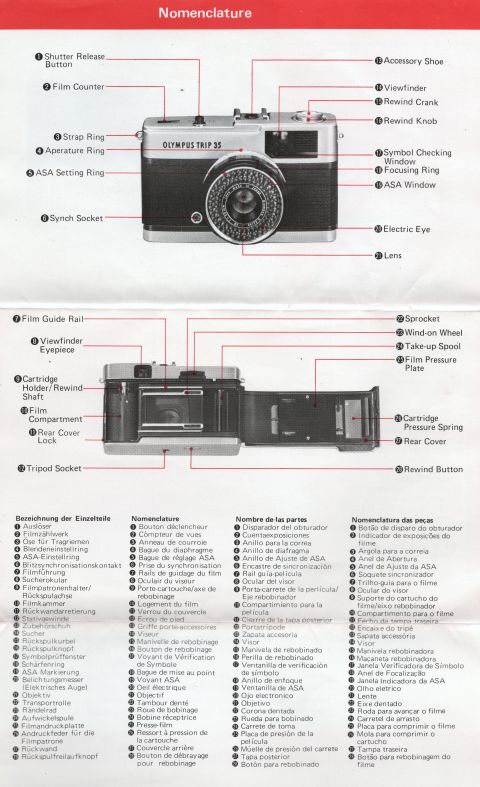
The viewfinder features a mechanical “red flag” warning system for scenes with insufficient lighting (the camera will also prevent exposures in those conditions). It shows bright lines with parallax markings inside a small but bright window with 0.55x magnification. The eye relief isn’t great, but if you aren’t wearing glasses, you’ll notice a “ Judas window ” that overviews the camera’s shooting mode and distance settings.
Film advance is done with a thumb wheel; rewinding via the rewind knob is unlocked with a rewind button; the film cover opens with a small latch a the bottom-left when looking at the camera’s back.
Hot shoe and a PC socket are available for flash sync. Learn how to use flash with cameras like Trip 35 here .
Free Olympus Trip 35 manual download.
I’ve recently scanned the manual that my camera came with and converted it to a convenient PDF file that you can download for free here:
➜ Free Download : Olympus Trip 35 Instructions Manual (PDF)
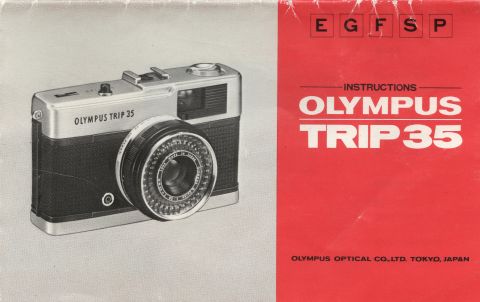
This manual took some cropping and assembly as its pages aren’t standard (it’s folded like a map). I hope that this little bit of extra effort makes it easier to read on your screen. However, I’m not sure how well it will look in print.
You’ll be asked to sign up for a free account with Analog.Cafe. It comes with access to more downloadable guides, additional website features, and a monthly community newsletter.
Taking the first photo with Olympus Trip 35: loading film & setting focus.
Trip 35 is easy to load — the only tricky part is finding the latch to open the film door. ( If you’ve never loaded film in these types of cameras, check out this guide .)
Given that you’ve loaded your Trip 35 with film rated between ISO 25 and 400, you’ll need to set the ASA/ISO dial to match your film speed . In general, ISO 100-400 films do best with this camera (a higher-ISO film works best in subdued light, and lower-iso film provides finer grain).
For automatic exposures, the ring around the lens closest to the camera body should be set to “A.” But manual exposures are possible at the constant 1/40s shutter speed (can be metered as 1/30s) with the apertures selected via the same ring (i.e., any number other than the “A”). Learn how to shoot film cameras in manual mode here .
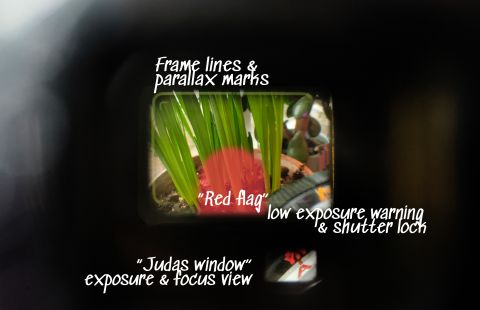
I appreciate the bright frame lines with parallax markings in the viewfinder . They make framing feel a little easier than on cameras with masks . Though I would prefer the self-illuminating kind.
The viewfinder window is fairly small. It’s usable with the glasses on; however, I had to use contacts to take advantage of the “Judas window” — a small secondary view below the main finder frame lines that shows the set distance icon and camera shooting mode/aperture.
Pointing the camera at things that are insufficiently lit for the film ISO/ASA set on the camera would raise a small translucent red plastic flag and block the shutter button. This would not happen when the camera is in manual mode (i.e. when an aperture value is selected instead of the “A”).
Olympus Trip 35’s shutter button provides medium-high resistance, it has a long travel distance, and it’s very well-balanced with the rest of the body for shake-free hand-held exposures . The leaf shutter is also shake-free (though it feels a little loud for what it is ).
Trip 35 uses a zone-focusing system. For a casual photographer, it works by turning the focus ring around the lens until it clicks to either a single-person icon 👤 for portraits, a two-person icon 👥 for group portraits, a red “group-snap” icon ⍒.⍒ , or the mountains icon 🏔️ for landscape photos.
Below the lens barrel, there are more precise focus markings in feet and metres. Learn how to zone-focus quickly and accurately here .
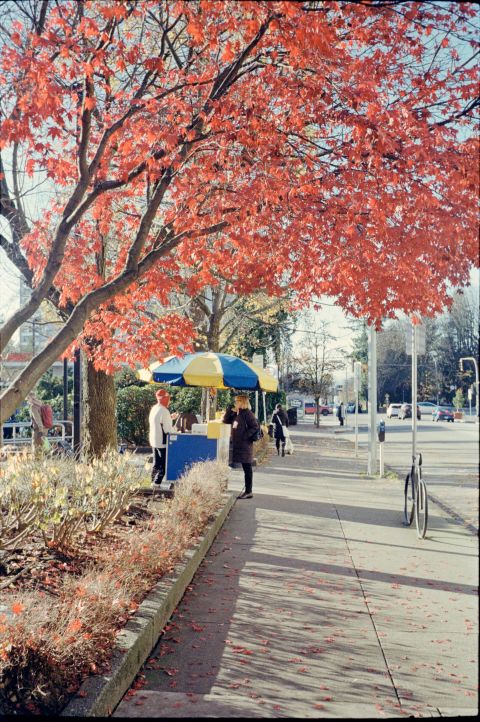
Olympus D. Zuiko 40mm 𝒇2.8 lens.
One of the most celebrated components of this camera is its lens. It’s very sharp in the middle , especially at 𝒇5.6-8 , with only minor swirl and softening in the corners.
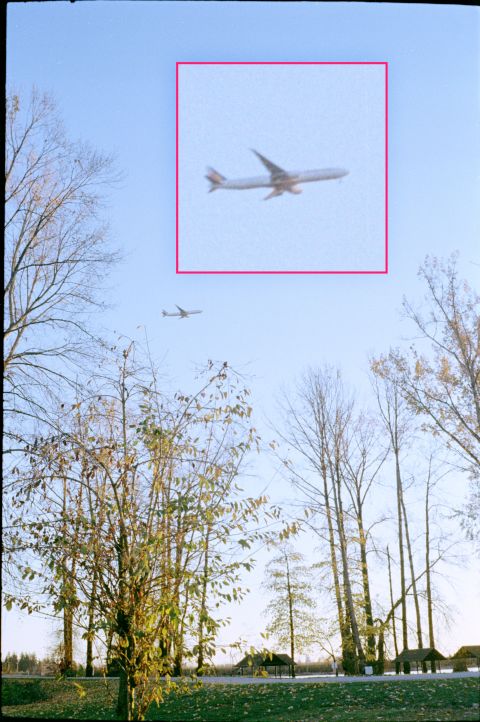
The lens renders a medium-low amount of contrast on my copy, but the coating appears to work well, as I noticed no overwhelming or unexpected flaring in any of my photos.
Overall, I found D. Zuiko 𝒇2.8 well-corrected, suitable for reproducing fine detail on high-resolution films.
The 40mm focal length is common and well-suited for a non-interchangeable camera system. It translates to ~57° diagonal angle of view — very close to the 60° in our central vision . Essentially, this means easy framing for most situations.
The 40mm D. Zuiko may not be appropriate for interior/architecture photography, close-ups, telephoto, or certain landscape images.
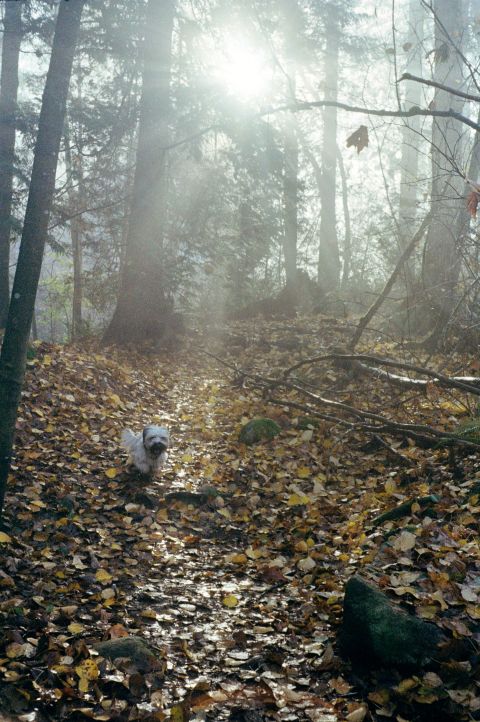
Olympus Trip 35 portability and ease-of-use (ergonomics).
Even though Trip 35 isn’t the smallest or the lightest 35mm film camera , it’s reasonably portable for the type of lens it uses and a full metal body. All of its controls are perfectly positioned for quick, intuitive action. With a little practice, you can use this camera one-handedly.
I kept mine in wool jacket pockets and hoodies with no issues. Despite fitting will in hand, Trip 35 is noticeably hefty; my Peak Design wrist strap solved any danger of dropping this camera.
Olympus Trip 35 build quality & variations.
Trip 35 was a remarkably successful design; understandably, Olympus didn’t want to change it much while it continued to make record sales. All of the Olympus Trip 35s look nearly identical, with some known changes introduced in the 1970s that had little effect on appearance and no effect on performance (i.e. a plastic shutter button instead of the metal one).
The only significant divergence from the standard design was the black paint brass Trip 35 , which remained in production for just two years. This variation is much rarer than the silver aluminum bodies, but in Olympus’ world, this means that there are less than a hundred options available at any time, and they cost $50 extra.
If you plan to keep this camera for a while and are willing to spend a little more, the black version may be worth it (if you like the look of brassing). It has excellent build quality and an impressive appearance; every part fits perfectly, in line with what you’d expect from the much more expensive Olympus PEN half-frame SLRs .
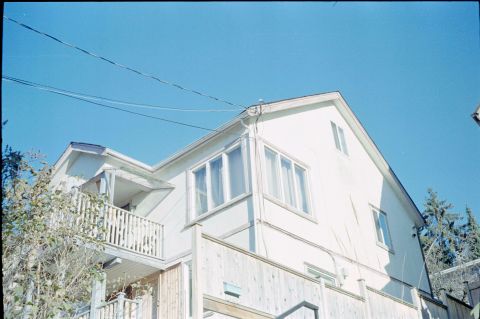
But despite their clever design and quality assembly, Trip 35s can be prone to deterioration.
In my copy, the light meter over-exposes every brightly lit frame by 1-2 stops. It’s difficult to say if it’s the time taking a toll on the intricate cells or if it’s the imprecise nature of the selenium metering that’s preventing me from taking perfectly exposed images.
A clever photographer can always compensate by setting the film ASA/ISO higher in full sun or shooting Trip 35 manually. But if you’re looking to get a copy, you should verify that the camera is sold as fully functional . An online listing would say that in the title or the description.
Trip 35 mods, hacks, and repairs.
Repairing Trip 35s may cost as much or more than the value of the camera. The good news is that simple fixes (like cleaning oil of the shutter and aperture blades) aren’t difficult if you’ve got the right tools and know-how.
Another common issue with cameras this old is the light seals. The soft, spongy material tends to crumble over time, which in turn can create light leaks . I have a guide on fixing that quickly and cheaply here .
Being a mechanical camera with manual controls, Trip 35s can survive past the span of the selenium cells that power its fully automatic shooting mode. Some photographers may prefer to use the camera in the manual mode for more precise control over exposure. You may even modify yours to shoot with the faster 1/200s shutter speed for improved action snaps and reduced motion blur.
How much does Trip 35 cost, and where to find one.
Olympus Trip 35 film camera is a fantastic value in terms of fun, image quality, and build quality. Most copies of these cameras can be bought between $20-120 — depending on the condition. And a few bucks more can get you the rare-ish black paint version .
❤ By the way: Please consider making your Olympus Trip 35 purchase using this link so that this website may get a small percentage of that sale — at no extra charge for you — thanks!
About this article :
It can take five hours of work (or more) to write and proof a quality five-minute read with high-res illustrations. Below are the people who made this one possible. All content is reviewed, styled, and edited by Dmitri .

Item added to your cart
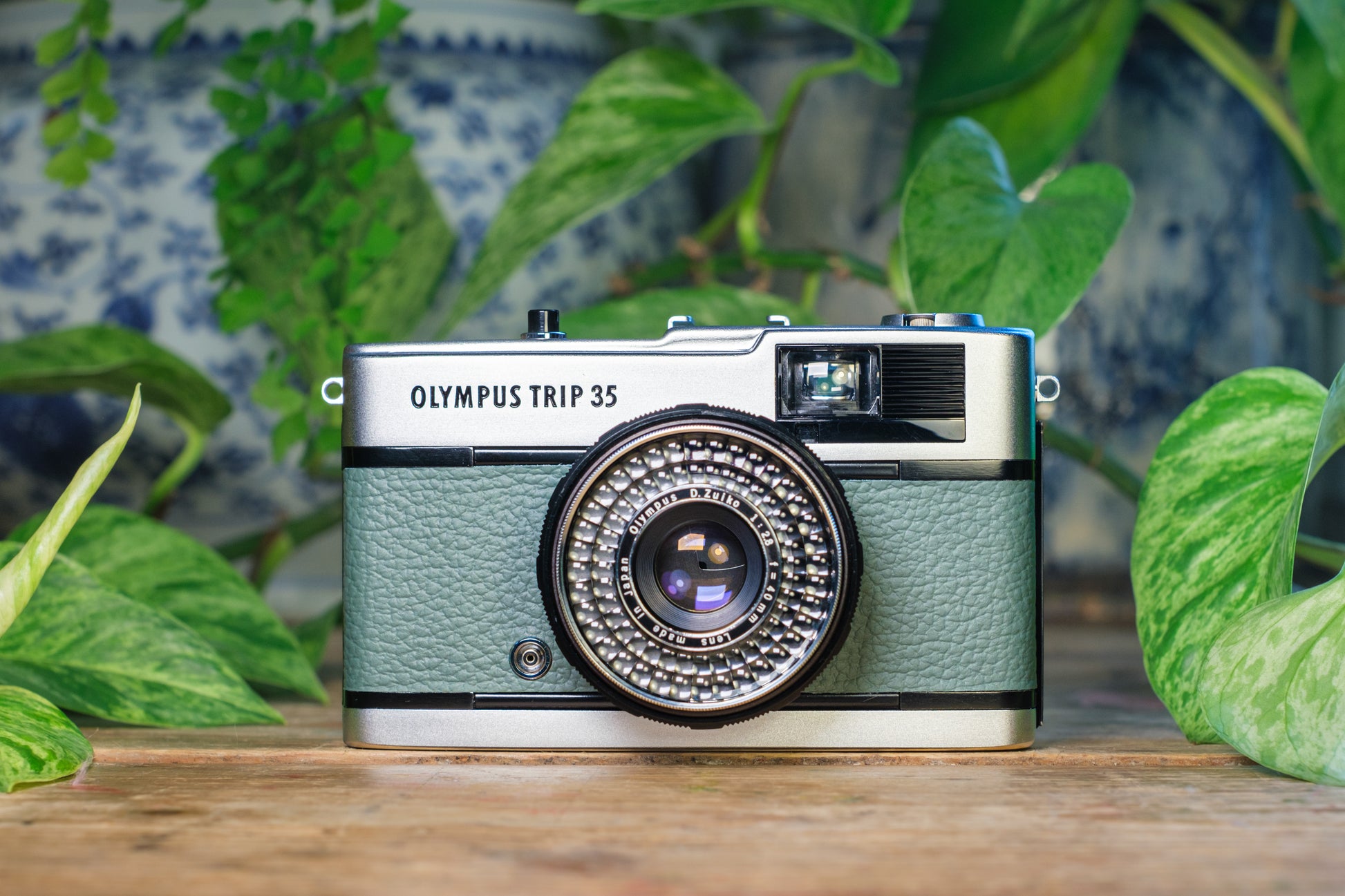
Olympus Trip 35 Vintage 35mm Film Camera - Forest Slate Green | Tested & Fully Refurbished | 100 Day Guarantee
Couldn't load pickup availability
The Iconic Olympus Trip 35 Vintage Film Camera
A point and shoot perfectly capturing the retro vibe with its beautiful design from the 60s , this elegant 35mm film camera is portable and packs a punch. Equipped with a very sharp 40mm f/2.8 lens , automatic settings and an accurate solar powered metering system , you can capture stunning photos with ease.
Key Olympus Trip 35 Features: Easy-to-use Focus Settings, Automatic Exposure Settings and No Batteries Required, Ever!
Each and every camera sold is rigorously tested and cleaned before being sent to our customers. Through this you can be confident that the camera will be in 100% working order as soon as it is unwrapped.
The camera will also come with complete how-to guides included .
Features of all RetroCameraFix Film Cameras: 100 Day Guarantee, 1 Tree Planted and New Light Seals
Its compact size makes it a great travel companion, and its durable build ensures it can withstand any adventure. Say goodbye to disposable cameras or digital filters and experience the nostalgia of film photography with the vintage Olympus Trip 35!
12 unique custom leather colours now in stock.
--- How the camera condition is graded ---
We choose our Olympus Trip 35 stock carefully so that they are all in good condition, but the cosmetic condition option for the camera is split into three different categories within this:
A "Near Mint +" camera will look almost new; it may have a few superficial signs of use or age (Top 1/3rd of stock).
A "Very Good" camera will also look nice but it will have more signs of wear such as worn down paint and small scratches on the metal (Middle 1/3rd of stock).
An "Average" camera will have more severe signs of wear/use such as deeper scratches, black specs and more obvious blemishes (Bottom 1/3rd of stock).
The base of the camera, owing to being around 40 years old, will be more likely to have some signs of use/small scratches.
None of the cosmetic defects will have an impact on the mechanical working or functionality of the camera.
The camera featured in the listing is an example of a mint condition camera.
Lens caps and straps may be replaced with new versions depending on stock levels, please add a note to RCF if you have any specific requests.
Customer Reviews
- Choosing a selection results in a full page refresh.
- Opens in a new window.
- Newsletter Archive
- Feedback Any feedback on the Everything Vintage site ?
- Beach films
- Carnivals, Fetes and Fairs
- Christmas Flims
- European Travel
- Famous Landmarks
- Holiday Films
- Home Life and Social History
- Special Events
- Sporting events and Games
- Trips within the UK
- Wedding films
- Worldwide Travel
- Zoos, Wildlife and Nature
- Ilford Cine film
- Kodak B & W Panchromatic
- Browse films Search for a vintage home movie
- Film Blog Read the vintage film blog
- About Home Movies Why vintage films?
- Entertainment
- Family or Group
- Town or City
- Public Event
- Transportation
- 1920 - 1929
- 1930 - 1939
- 1940 - 1949
- 1950 - 1959
- 1960 - 1969
- 1970 - 1979
- 1980 - 1989
- 1990 - 1999
- 2000 - 2009
- Wallace Heaton
- Browse Photos Browse and filter photos
- Photo Blog Blog posts written specifically for the photo section of the site
- About Photos About the Photos section of this site
- Browse Projectors
- Made between 1950 & 1959
- Made between 1970 & 1979
- Made between 1980 & 1989
- Browse Vintage Radios
- Made between 1940 & 1949
- Made between 1960 & 1969
- Browse Manuals
- Advertising Material
- Camera Manuals
- Cine Equipment Manuals
- Photographic Equipment Manuals
- Digital Compact
- Folding Camera
- Point and Shoot
- Rangefinder
- Single lens Reflex
- Twin lens reflex
- Viewfinder camera type
- 1930 to 1939
- 1940 to 1949
- 1950 to 1959
- 1960 to 1969
- 1970 to 1979
- 1980 to 1989
- Browse Cameras Browse and filter vintage camera articles
- Camera Blog Blog posts written for the camera section of the site
- Browse & filter vintage lens
- Meyer-Optik
- Vintage Cameras
The Super Olympus Trip 35 camera
This is a review of the latest addition to my camera collection and a super little point and shoot camera, the Olympus Trip 35.
Table of Contents
My Olympus Trip 35 Camera
I have been looking forward to receiving this camera since I bought it on eBay a few days ago for £12.50. It is an iconic camera from the 1970s which I remember wanting to own when they were first introduced, but at the time couldn't afford to buy one.
The first thing which struck me when I unwrapped it from the packaging yesterday is how small it is. Considering this is a full frame camera, it's tiny ! The image below shows it in comparison to a Canon S95 digital compact, and the Olympus is only a bit bigger, although the frame size is massively bigger.
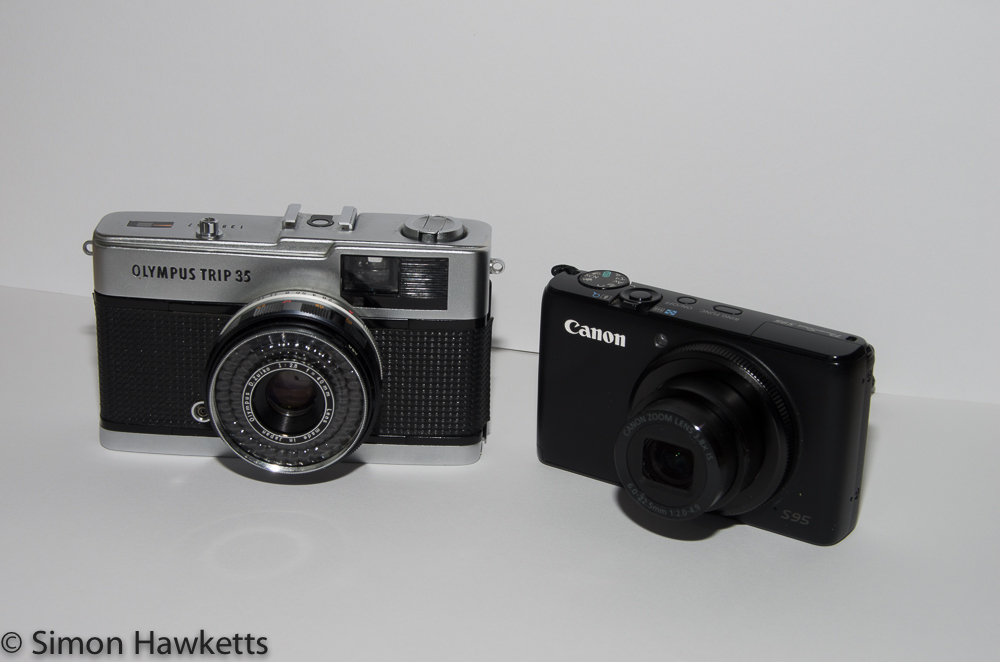
The Olympus Trip 35 cameras are quite easy to date - first, there is a clue in the colour of the shutter release button. Early cameras had a chrome button, later cameras had a black plastic shutter button. This camera has a chrome button, indicating an early example.
There is another even easier way to date the camera however; If you remove the film pressure plate there is a code on the back which includes the year and month of manufacture! Mine has a 3 & 9 indicating September 1973. So, just coming up to nearly 50 years old.
There seem to be a few issues with my copy of the camera, the main issue being that when I first received it, the aperture was stuck.
There is a way of easily telling if one of these cameras is working. Set the exposure control to automatic and cover the photocell round the lens. If you then try to take a picture, you should find that the shutter won't fire, and you get a red marker in the viewfinder. This is to make sure that you don't waste exposures when the light is too low.
When I tried this procedure initially, the camera did fire the shutter and the aperture was stuck at f/22. However, after a few turns of the aperture ring and further attempts, the aperture started to work, and the exposure system now seems to be correct.
I think the aperture blades have been coated with a thin coat of oil during the years, which has stuck the blades together and stops the aperture from working properly. My recent activity with the camera has dispersed the oil, but I suspect that the camera will need to be dismantled and properly cleaned at some point if it's to be regularly used.
The other things which need attention are the light seal at the hinge of the film door which is completely gone; the leatherette covering which is starting to peel slightly, and most worrying, the film guides which seem pitted.
It may be that this camera needs to become a donor for parts for another (I have a few more on my eBay watch list).
Pictures of the Olympus Trip 35
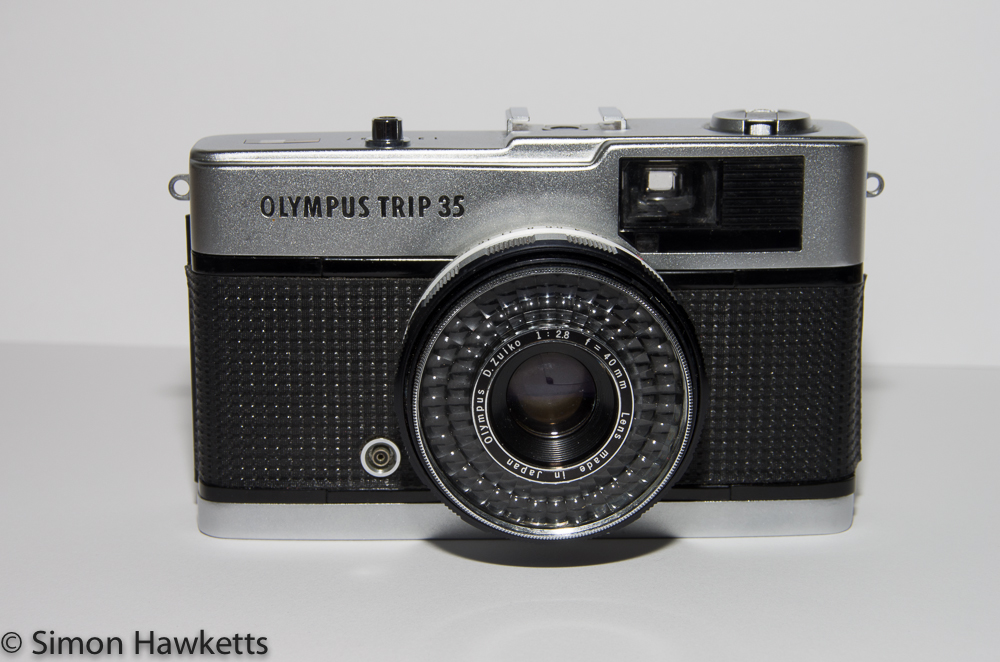
Olympus Trip 35 Camera Description
This is a 35 mm Point and Shoot automatic camera. There are a limited number of options available to the user - simply set the exposure to A - automatic, and set the focus to one of 4 different focus zones, and you are good to go. If there isn't enough light, the shutter won't fire, and you switch to flash mode. In flash mode you can set the aperture between f/2.8 and f/22 which you would read off the back of whichever flash gun you attach (there is no built-in flash).

The lens fitted to the camera is a 40 mm f/2.8 Zuiko coated lens, which is reputed to be extremely sharp. 40 mm will give a slightly wide angle view compared to the normal 50 mm standard lens used with 35 mm cameras.
There is an ISO setting ring at the front of the lens which has the range 25 - 400 ISO which, although a bit limited, covered all the normal film speeds available at the time the camera was made.
The light meter is fitted around the front of the lens which means it automatically compensates for any filters fitted, and stops the camera firing the shutter if a lens cap is fitted. The camera exposure system is driven from this light cell and requires no other battery.
The viewfinder is quite bright and has a neat little extra view at the bottom of the window which shows the focus zone and exposure setting the camera is set to, so you can see all you need to see in the view finder.
All in all, this is an incredibly neat and attractive small point and shoot camera. I'm looking forward to getting a film in this and seeing what sort of results I get.
Olympus Trip Specifications
- Olympus Trip 35 mm point and shoot camera
- Fully automatic operation
- 40 mm Zuiko lens
- Aperture range f/2.8 to f/22
- Shutter speeds 1/40 sec & 1/200 sec
- Zone focusing my symbols
- Light cell fitted around the lens opening
- Film speeds 25 ASA to 400 ASA
- The manual for this camera is available on-line here .
- The pictures from the first film I put through this camera are here .
Note: This article was reviewed and updated in July 2022
How useful was this article?
Click on a star to rate it!
Average rating 3 / 5. Vote count: 1
No votes so far! Be the first to rate this article.
As you found this post useful...
Please consider sharing to social media
We are sorry that this post was not useful for you!
Let us improve this post!
Tell us how we can improve this post?
Share this:
- Click to share on Twitter (Opens in new window)
- Click to share on Facebook (Opens in new window)
- Click to share on Reddit (Opens in new window)
- Click to share on Pinterest (Opens in new window)
- Click to share on Mastodon (Opens in new window)
Leave a Reply Cancel reply
Related posts.

Join the monthly newsletter for cameras & lenses
Site Navigation
- Find a Lens
- Find a Camera
- Find a Photo
- Find a Film
First Name Surname Email
Area of interest
Cameras & Lenses Photos & Films Projectors Radios & Tape Recorders
I accept the privacy statement
You can edit your preferences and unsubscribe at any time after subscribing. Privacy Statement
- Entries feed
- Comments feed
- WordPress.org
Latest Comments
- Mike Lafratta on Avo Model 8 Mk 3 test meter
- Christopher Bentley on Pye P114BQ portable attaché case radio from 1952
- Mark on Impressive Minolta Dynax 800si 35 mm autofocus camera
- John Forbes on Pentax Super Program / Super A review
- patrick on Simple Kodak Kodaslide table projector from the 1950s

- Electronics
- Camera & Photo
- Film Photography
- Film Cameras
- Point & Shoot Film Cameras
Fulfillment by Amazon (FBA) is a service we offer sellers that lets them store their products in Amazon's fulfillment centers, and we directly pack, ship, and provide customer service for these products. Something we hope you'll especially enjoy: FBA items qualify for FREE Shipping and Amazon Prime.
If you're a seller, Fulfillment by Amazon can help you grow your business. Learn more about the program.

Image Unavailable

- To view this video download Flash Player
OLYMPUS Trip 35 Film Camera Vintage
Return this item for free.
Free returns are available for the shipping address you chose. You can return the item for any reason in new and unused condition: no shipping charges
- Go to your orders and start the return
- Select the return method
About this item
- The Olympus Trip 35 is a vintage film camera first introduced in 1967.
- It features a fixed 40mm f/2.8 lens known for producing sharp and vivid images with natural colors.
- The camera has a fully automatic exposure system and a manual focus ring for greater control over composition.
- It has a sturdy metal body and classic minimalist design.
- The camera uses 35mm film, which is widely available and can be easily processed by most photo labs.
Similar items that may deliver to you quickly

Compare with similar items
Looking for specific info, product description.
35mm Film Camera
Product information
Warranty & support, customer reviews.
Customer Reviews, including Product Star Ratings help customers to learn more about the product and decide whether it is the right product for them.
To calculate the overall star rating and percentage breakdown by star, we don’t use a simple average. Instead, our system considers things like how recent a review is and if the reviewer bought the item on Amazon. It also analyzed reviews to verify trustworthiness.
Reviews with images

- Sort reviews by Top reviews Most recent Top reviews
Top reviews from the United States
There was a problem filtering reviews right now. please try again later..
Top reviews from other countries
- Amazon Newsletter
- About Amazon
- Accessibility
- Sustainability
- Press Center
- Investor Relations
- Amazon Devices
- Amazon Science
- Sell on Amazon
- Sell apps on Amazon
- Supply to Amazon
- Protect & Build Your Brand
- Become an Affiliate
- Become a Delivery Driver
- Start a Package Delivery Business
- Advertise Your Products
- Self-Publish with Us
- Become an Amazon Hub Partner
- › See More Ways to Make Money
- Amazon Visa
- Amazon Store Card
- Amazon Secured Card
- Amazon Business Card
- Shop with Points
- Credit Card Marketplace
- Reload Your Balance
- Amazon Currency Converter
- Your Account
- Your Orders
- Shipping Rates & Policies
- Amazon Prime
- Returns & Replacements
- Manage Your Content and Devices
- Recalls and Product Safety Alerts
- Conditions of Use
- Privacy Notice
- Consumer Health Data Privacy Disclosure
- Your Ads Privacy Choices
- Destinations
- Outdoor Adventures
- Travel Photography
- Trip Planning
- Bucket List
- Terms/Privacy
- Travel Resource Library

The Olympus Trip 35 – a perfect travel film camera
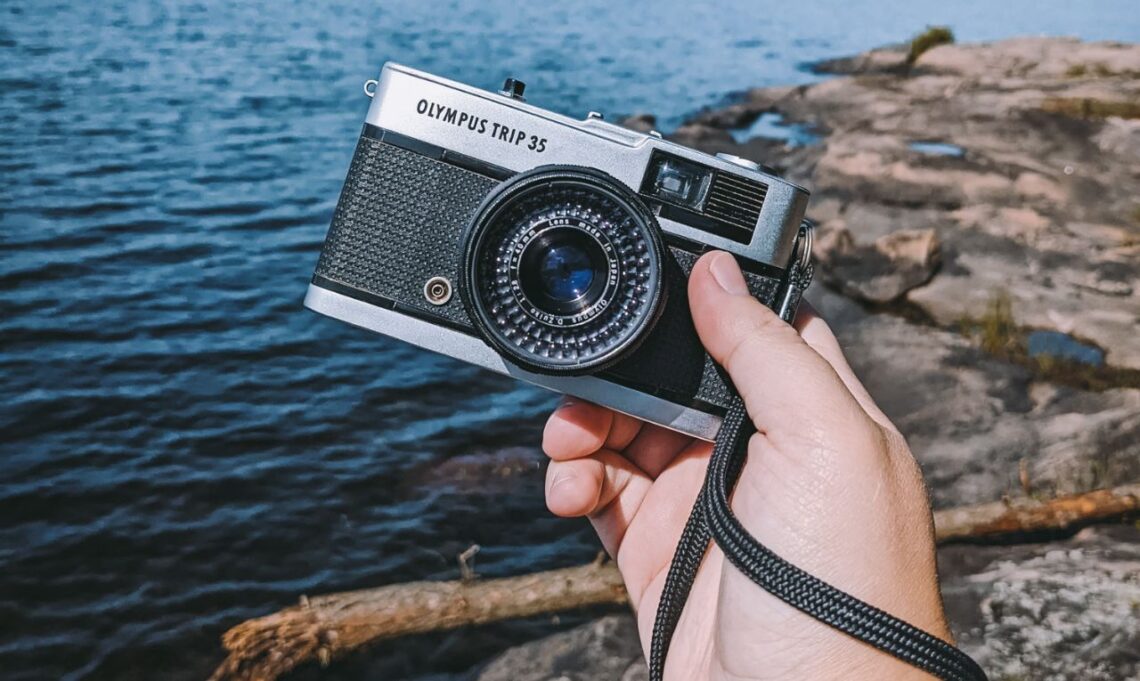
The Olympus Trip 35 is a compact, battery-free point-and-shoot 35mm film camera known for its ease of use and quality. When it was released in 1968, it was marketed as the perfect film camera to take on your travels.
NOTE: Travel is not recommended at this time. These posts are here to serve as inspiration when we can explore again. Hey there – this post likely contains affiliate links, which means I earn a commission (at no extra cost to you) if you purchase from them. This helps me earn a few dollars to run this website.

Imagine yourself as a traveller in the 1970s . Airlines were becoming more popular than ever, with more and more destinations opening up to international exploration. The Grand Tour of the 19th century had felt a resurgence for the everyday person. You only connected with those back at home by postcard and you took photos on film, waiting to share them once you returned.
With over 10 million units sold during its 16-year run, it would be likely that as a traveller in the 1970s, you would have had (or would have wanted) the Olympus Trip 35. How about today? With film photography becoming more popular again, is the Olympus Trip 35 a worthwhile film camera to take on your travels?
What is the Olympus Trip 35?
The Olympus Trip 35 is what is known as a point-and-shoot camera – one that does most of the work for you. The camera has a fixed 40mm f/2.8 lens. The camera uses just two shutter speeds and a selenium photocell as a light metre.
The Olympus Trip 35 was marketed as an easy-to-use, compact camera to take with you on your travels. They are super lightweight, take regular 35mm film and work with a click of a button.
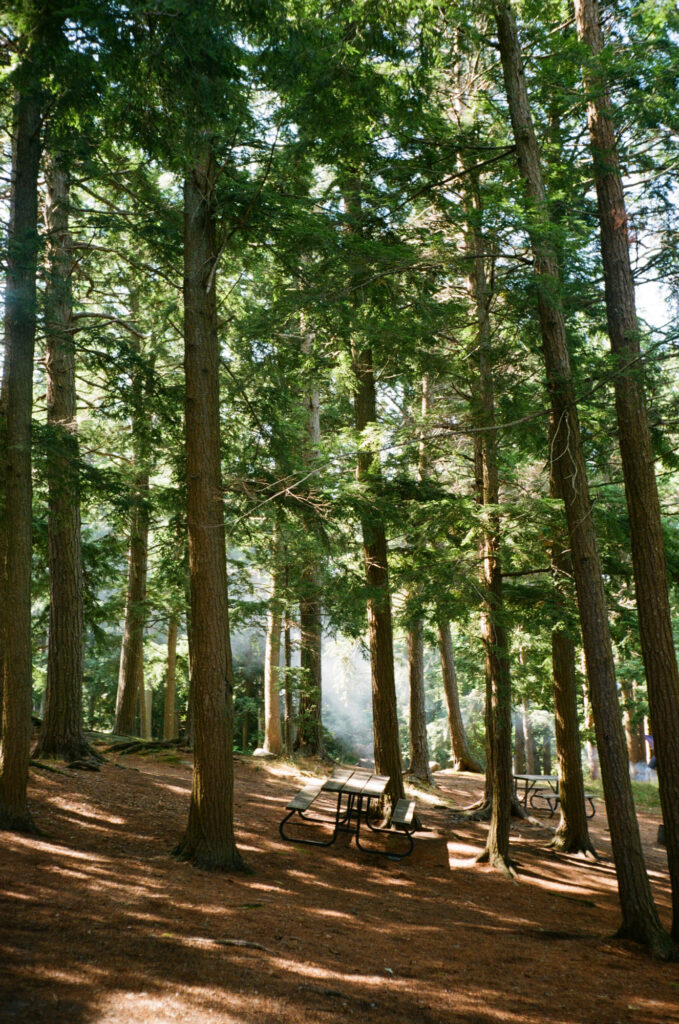
How does the Olympus Trip 35 work
The Olympus Trip 35 doesn’t need a battery to operate, which is pretty darn cool if you ask me. It uses a solar-powered selenium photocell light metre to automatically set the aperture and select a shutter speed.
First up, the Olympus Trip 35 has an ISO range of 25 to 400, which makes it perfect for a film stock like Kodak Gold 200. You can use (the crème de la crème) Kodak Portra 400, but because that film stock is so expensive, I’d use the cheaper Kodak Gold 200 or Kodak Ultramax 400 in this point-and-shoot camera. You could even try a nice black and white film stock, although I haven’t done that yet myself.
The Olympus Trip 35 just has two shutter speeds – 1/40s or 1/200s, which the camera chooses automatically based on the available light. The camera’s aperture ranges from f/2.8 to f/22, which it also chooses automatically when in “A” mode. You can take the camera into Aperture-priority mode by twisting the aperture ring on the lens, but there’s really no need to.
The camera has a hot shoe where you could sync with a flash, although I’ve not tried that yet.
Lastly, the only thing you really need to think about when using the Olympus Trip 35 is the focus setting. The camera has four focus zones marked by four symbols: portrait, two people, a group of people and landscape. It’s relatively easy to figure out what focus range you need, but if you need more specifications, the focus zones are 1 metre, 1.5 metres, 3 metres and infinity. For most travel photos, you’re going to stick to the landscape focus zone.
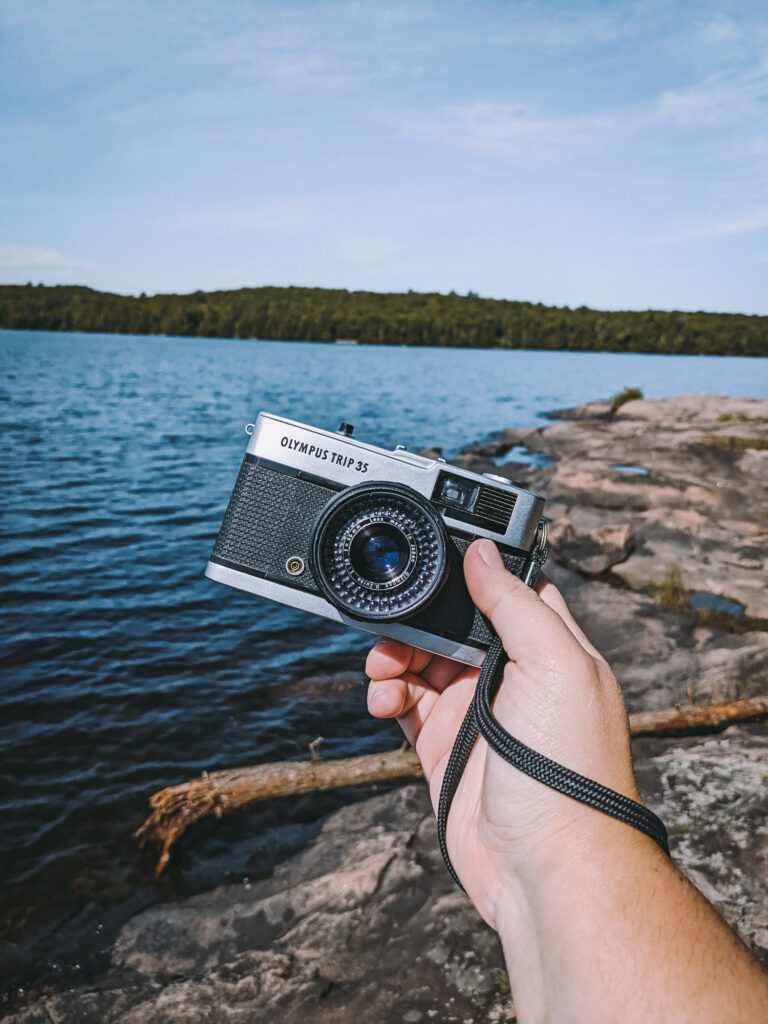
Is the Olympus Trip 35 easy to use?
Once you get the hang of it, yes, the Olympus Trip 35 is so easy to use! The first step is to choose your film stock. The ISO ranges from 25 to 400 so you’ll want to choose a film stock in that speed. (Kodak Gold 200 and Ultramax 400 are some of my favourites).
Next, you need to load the film. There’s a small release button on the left-hand side to pop open the back cover. The 35mm film loads in like most other 35mm film cameras. You need to pop the rewinder knob up, fit in the film and push the rewinder knob back in. Then thread the leader part of the film into the take-up spool making sure that the teeth are grabbing onto the perforated part of the film. Tighten the film by using the film advance wheel, making sure the rewinder knob is turning as you crank the film advance. Close the back of the camera and advance the film three times until the counter is at 0.
Make sure you’ve set your ISO to match your film stock. You can do so by twisting the outer ring of the lens.
Make sure the aperture is set on “A” so that the camera can decide what aperture to use. Once you do that, the camera will decide on either 1/40s or 1/200s for the shutter speed based on the available light.
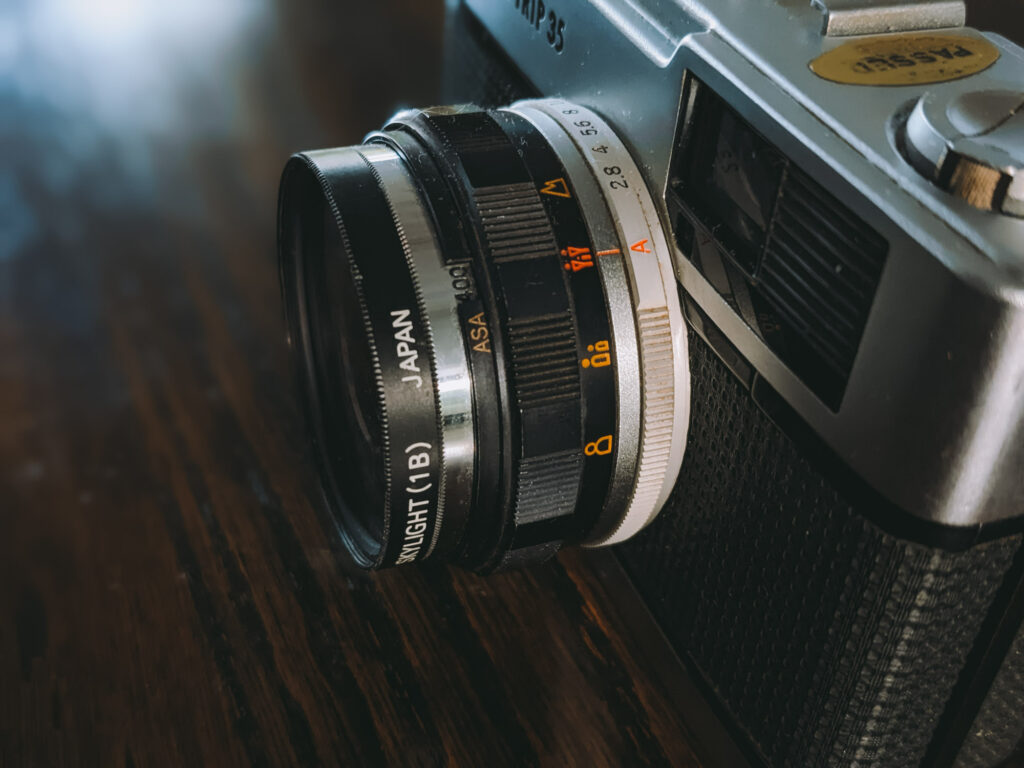
Next, choose your focus zone. If you’re taking a portrait, use the portrait focus zone, if you’re taking a landscape, use the landscape focus zone. It’s pretty simple.
Then you look through the viewfinder you’ll notice that you can see the lens in the viewfinder. That’s because it’s a parallax viewfinder, rather than a mirror system like you see in most DSLR cameras. The viewfinder in the Olympus Trip 35 has parallax markings, which help you frame up an image when your subject is close to correct for this viewing error.
The second, very small window you see under this (which is called the Judas window – don’t ask me why) shows the aperture session and distance symbol that you’re using.
Once you look through the viewfinder, click the small shutter button on the top right to take the picture.
If a small red flag appears in the viewfinder, it just means that the camera has decided there’s not enough light and won’t take the photo.
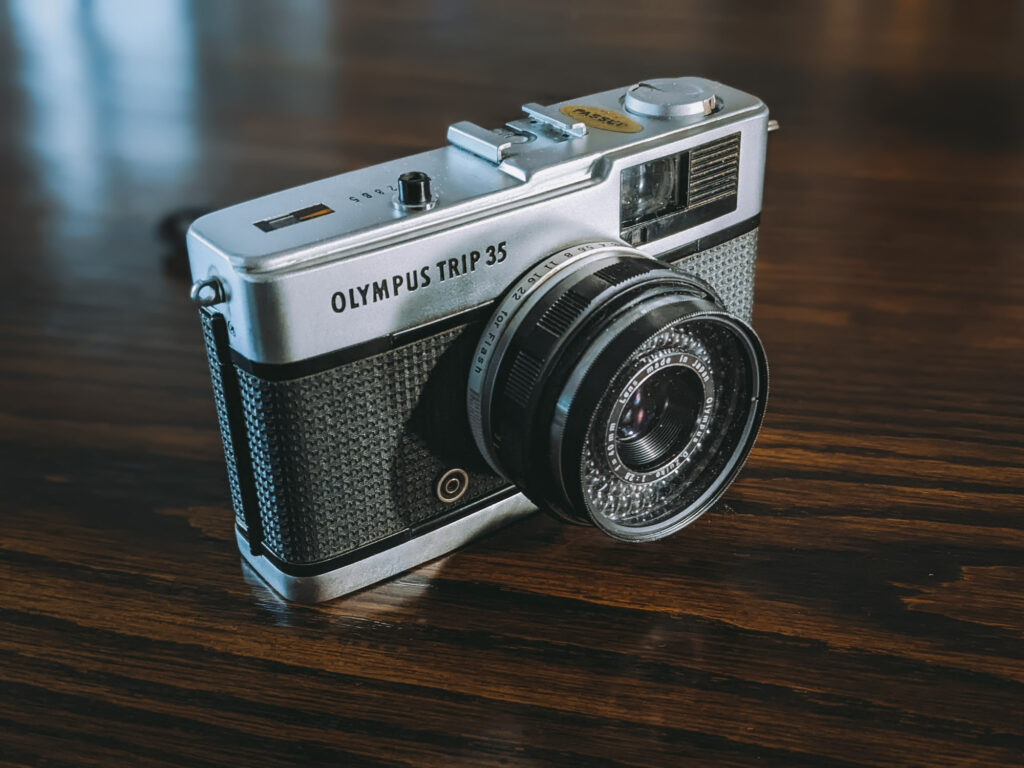
Finding an Olympus Trip 35
I think what sold me on the Olympus Trip 35 was how easy it was to use. I had just started my journey back into film photography and I already had the 100% manual Canon AE-1. I wanted something light, enjoyable and fun to use, while still being vintage.
I think I stumbled across the camera while perusing YouTube and thought I’d look it up. I was surprised at the range of cost. Some were selling for over $300 CAD, while others were listed for only $60 CAD.
I learned that people were buying these cameras cheap, replacing the exterior with new leather and reselling them for a lot more, which is why you see Olympus Trip 35s in fun colours. I ended up looking at three Olympus Trip 35s that were for sale but weren’t functional before buying the one I found. There are two major things you need to look out for when searching for an Olympus Trip 35.
First, make sure the aperture blades aren’t stuck. Sticky aperture blades is pretty common in these vintage cameras. You can test to make sure the aperture works correctly by looking through the front of the lens as you change the apertures and pressing the shutter. The aperture blades should change accordingly, opening and closing with ease. If it doesn’t it’s not the end of the world. There are a couple of tutorials on how to fix this online.
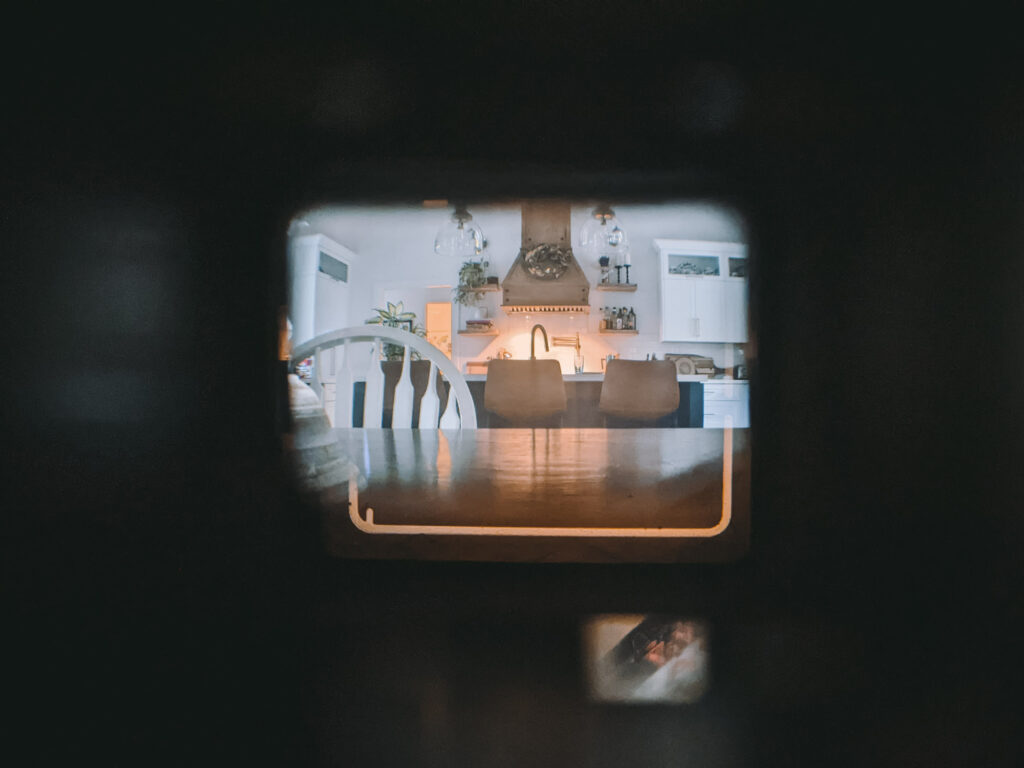
Second, make sure the selenium photocell functions. This is key because if doesn’t work properly, the camera won’t metre light properly and your images won’t come out. To test this, you can place your hand in front of the photocell, covering it completely. Try to take a photo, if the red flag appears, it means that it works. If it takes a photo, then it means the selenium photocell isn’t working.
I looked at three different Olympus Trip 35s where the sellers didn’t know if it worked properly or not. I ended up passing on all three before finding one at a camera store in Collingwood that actually worked.
Then I put just one roll of (relatively) cheap film through it and found it worked perfectly.
The tip is to keep a lens cap on it or in a case while not using the camera. Use this handy guide for more tips when buying an Olympus Trip 35.
Why the Olympus Trip 35 is a great travel film camera?
The Trip name is a reference to its intended market—people who wanted a compact, functional camera for holidays.
For me, I think the joy of it is wrapped up in one image I took while on a camping trip in the summer. I was headed out on a kayak on Stormy Lake near Restoule Provincial Park. I wanted to bring my camera, but because I use my camera for my wedding photography business, there was no way in hell I was putting it in a kayak, even if it was protected by a dry bag. I just didn’t want to take that chance. So I put my phone and my Olympus Trip 35 in a dry bag and set off.
I had just brought my film camera out to take a photo when suddenly, a loon popped out of the lake in front of my kayak. I love the sounds of a loon and had heard them often, but I had never seen one so close. I snapped a quick photo of it with my Olympus Trip 35. I didn’t have to worry about aperture, shutter speed and I knew I already had it on landscape focus, so I just pointed the camera at the loon and snapped the photo.
By the time I put down my film camera and picked up my phone to take another photo, the loon had dove back into the depths and when it resurfaced again a few minutes later, it was too far away.
I had to wait another 3 weeks before I saw that photo, and it was even more magical once I saw the image developed.
So why is the Olympus Trip 35 such a great travel film camera?
Hopefully, by now I’ve convinced you that it is easy to use. The camera is lightweight and compact, plus it won’t accidentally take a photo if you’ve got it stashed in your bag. Plus, since it doesn’t need batteries, all you really need to worry about is making sure you have enough film!
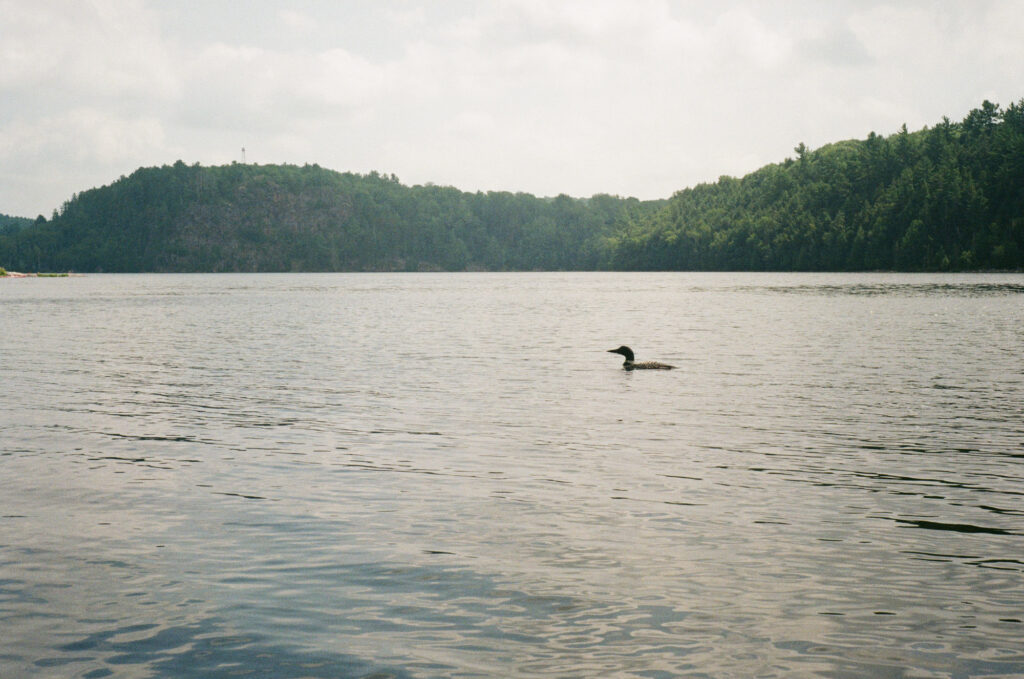
Olympus Trip 35 sample photos
So far, I’ve put four rolls of film through this camera and I’ve loved how it turns out every single time. The camera is so light, it fits in my waist bag, and makes shooting a breeze. I can’t wait to take this on my next photography adventure! Here are some sample photos from the Olympus Trip 35.
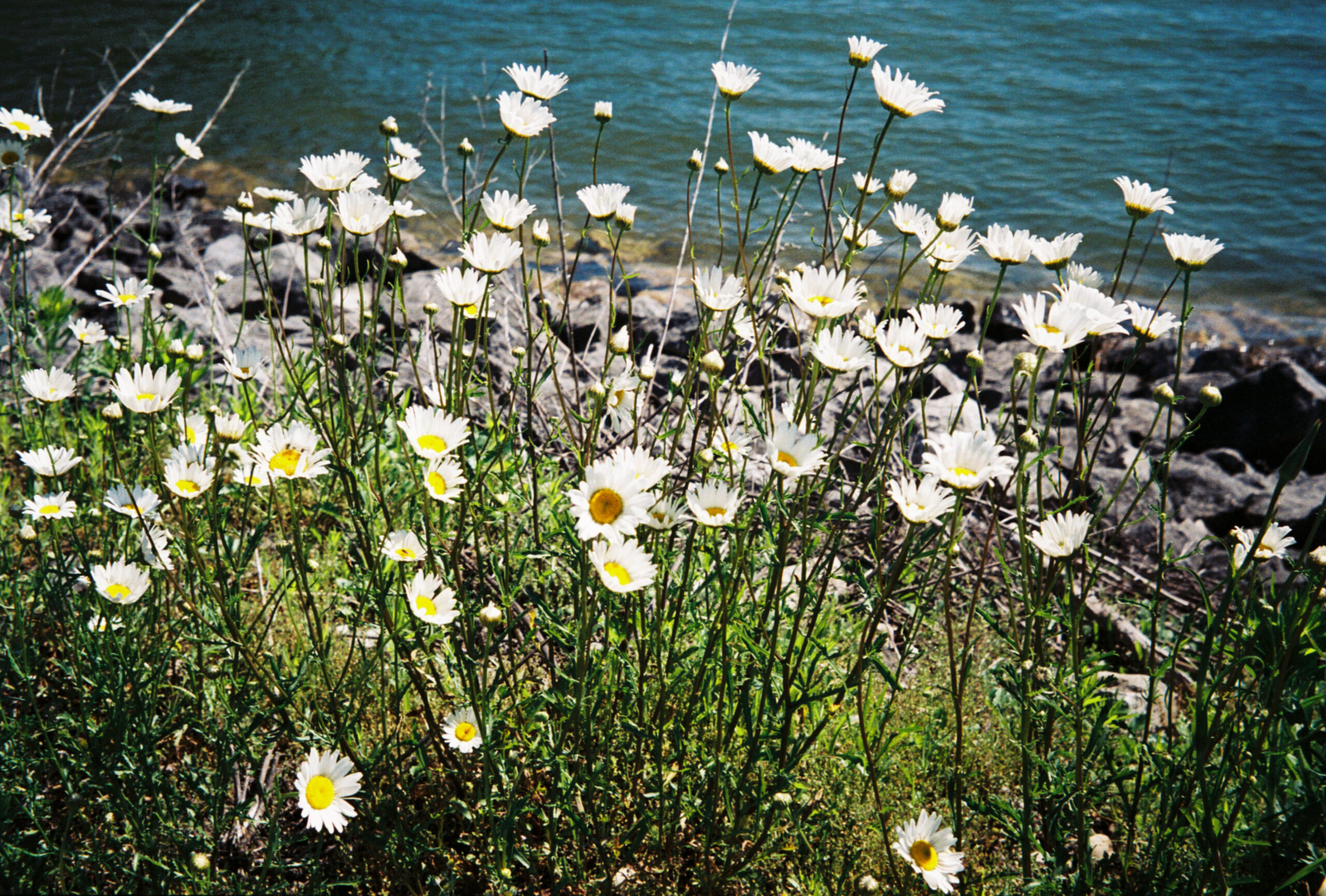
Love film photography? Join Grainery.
I’m pretty new to film, but I’ve absolutely LOVED this new app called Grainery . It’s Instagram-inspired but focuses solely on analog photography. It’s really new, the actual app for iPhone and Android is still in development, but the website works perfectly. And it’s free! Plus, the guy who is developing it is super grassroots and is planning to keep it ad- and algorithm-free.
If you are looking to upgrade to Grainery+, it’s only $3/month, which helps support the developer. (Not sponsored, just something I genuinely LOVE.)

If you love film photography, then what are you waiting for! Join Grainery and follow me @mywanderingvoyage . It’ll be fun!
Love beautiful photos?
I’ve launched a print shop!! After a couple of years of imposter syndrome, I finally launched my own print shop and I am stoked to share it with you!
You can hang up your favourite prints in your home, get a canvas print or even print on metal! Check out the Print Shop now!
Want to know when a new print collection drops and get exclusive discount codes? Sign up for the Print Shop list and you’ll be the first to know!

Olivia Rutt
Olivia Rutt is the travel writer and photographer behind My Wandering Voyage, a travel website helping working millennials find time to travel. She shares insight in trip planning, travel inspiration and photography tips. Olivia hails from southern Ontario, Canada where she works in the media industry between travels. Follow Olivia on Instagram where she shares her travel photos, or catch up with her on Facebook or Twitter.
Further Reading...

The ultimate guide to improving your travel photography with a smartphone
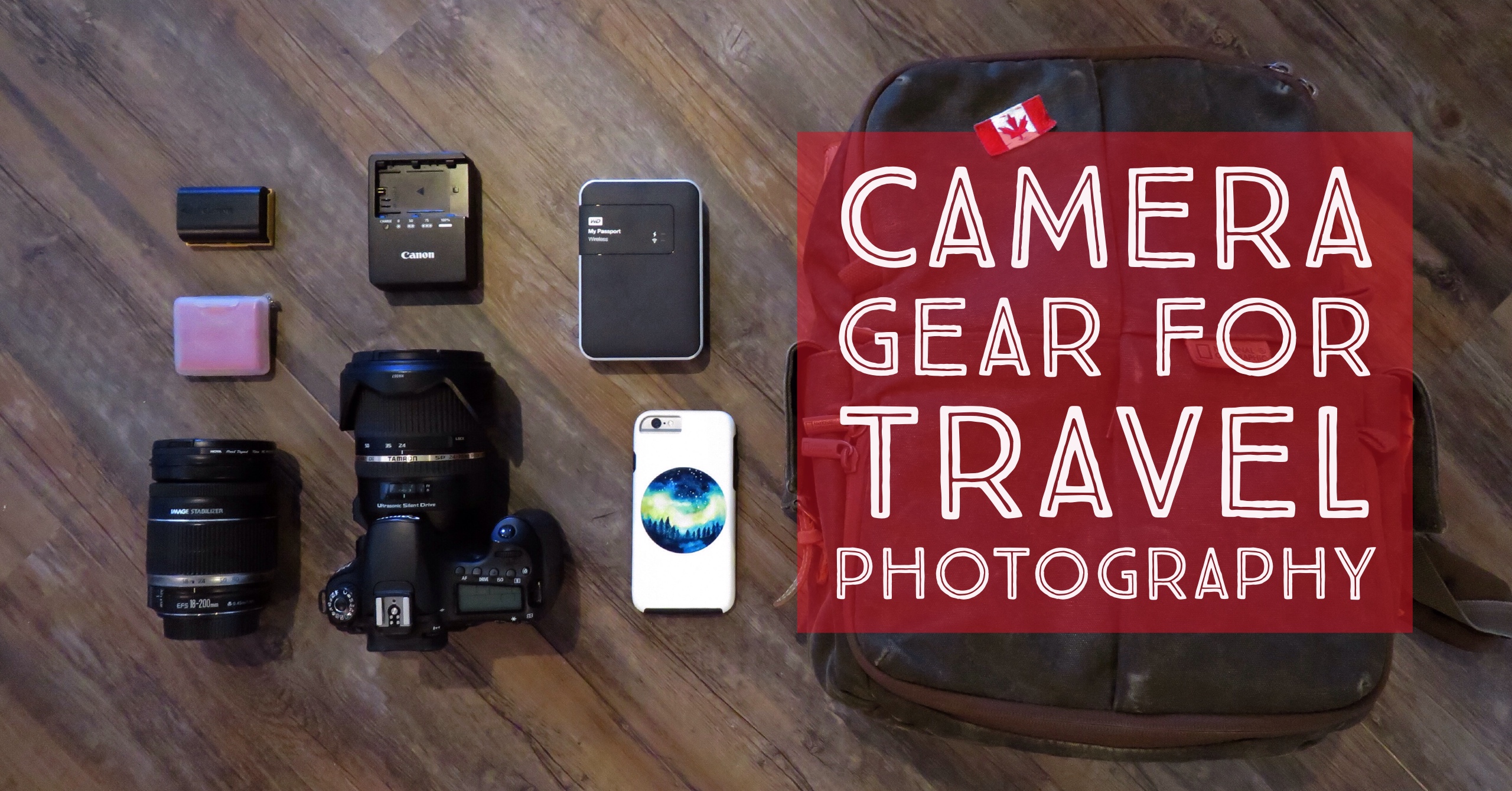
What’s in my camera bag? Camera gear for travel photography
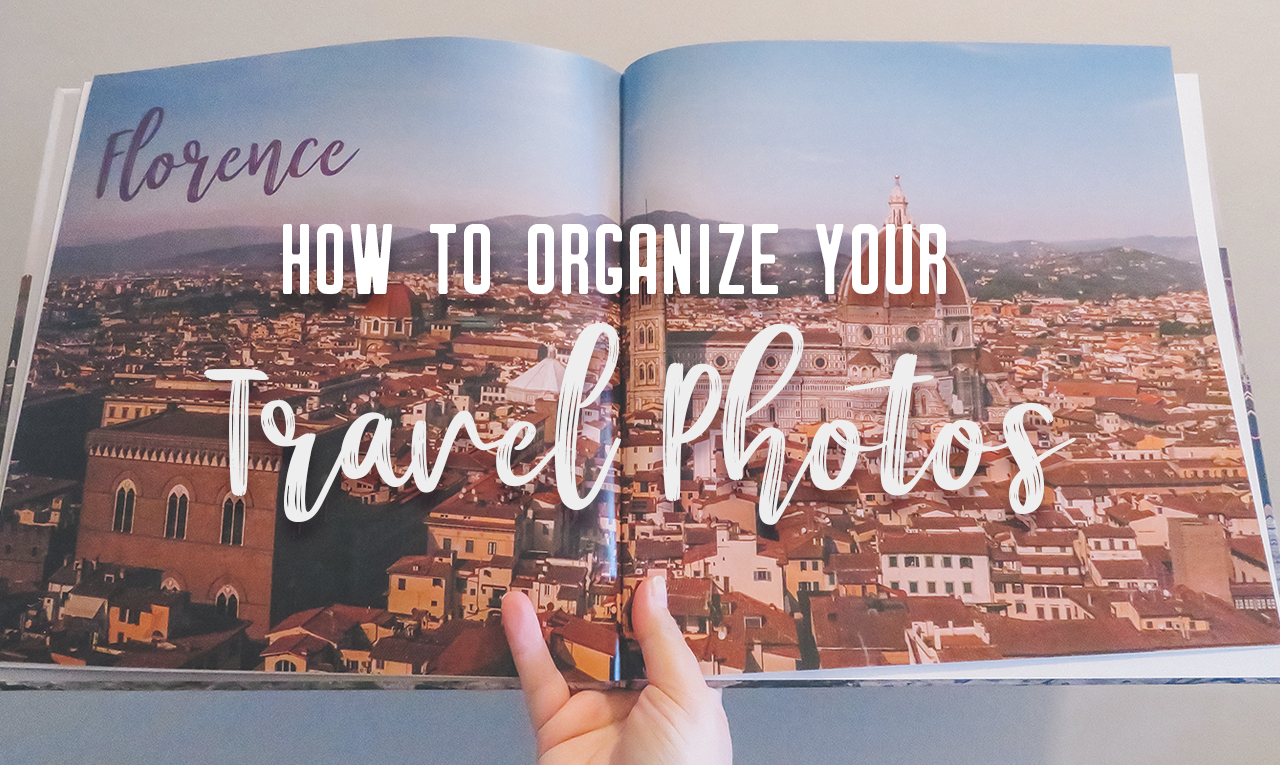
Best way to organize your travel photos
Mywanderingvoyage.

Privacy Overview
Just added to your cart

Your New Travel Companion The Olympus Trip35
Are you ready to discover the perfect compact camera that is both easy to use and beginner-friendly? Meet the Olympus Trip 35 - the 35mm camera that has been a favourite among photography enthusiasts since 1967.
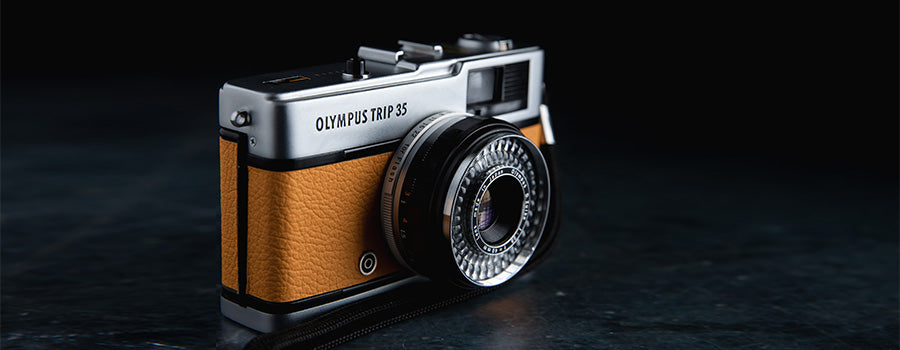
The Trip 35 is the perfect camera for anyone looking to capture life's moments without the hassle of complex controls. The camera features a 40mm f/2.8 lens and a solar-powered selenium light meter, making it fully automatic and easy to use. With just two shutter speeds and four-zone focus, the Trip 35 is ideal for anyone looking for a camera that delivers great results without requiring any prior photography experience.
This camera has an ISO range of 25 to 400, allowing you to choose from a wide variety of films, and with a maximum ISO of 400, the Trip 35 is perfect for low-light photography. The lack of more than two shutter speeds is not a problem, as at 1/200 s and f/22 with 400-speed film, the camera can deliver correct exposure in full sunlight, while at 1/40 s and f/2.8, correct exposure can be obtained under bright fluorescent light, without a flash.
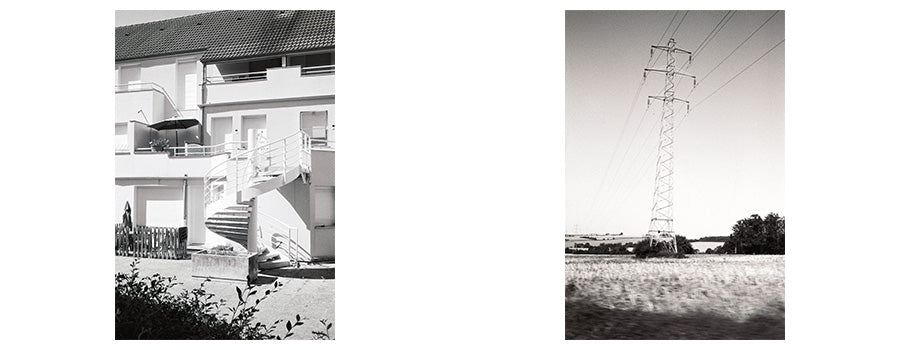
One of the most impressive features of the Olympus Trip 35 is that it operates without batteries. Its light meter and programmed automatic exposure system are solar-powered, making it one of the world's most advanced cameras that provides fully automatic exposure without requiring batteries or external electrical power. This means you can take the camera with you anywhere and be assured of great results, regardless of the location.
The Trip 35 is an inexpensive and lightweight camera that is perfect for anyone looking for a film camera with few adjustments. It's a great choice for anyone looking to capture life's moments without the hassle of complicated settings. Just set it to A and shoot, and you'll be amazed at the results.
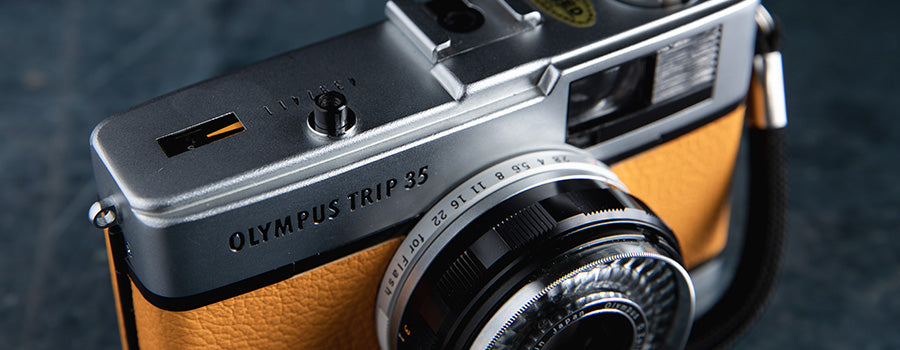
At our website, you can find the Olympus Trip 35 and many other film cameras available for purchase. With our wide selection of cameras, you're sure to find the perfect one to fit your needs, whether you're a beginner or an experienced photographer. We offer competitive pricing, a user-friendly website, and fast shipping, so you can start capturing your memories in no time.
Don't wait any longer to start your journey in film photography - visit our website and check out the Olympus Trip 35 and our other film cameras today. We're confident that you'll love the results and will be impressed with how easy it is to capture great shots with this camera.
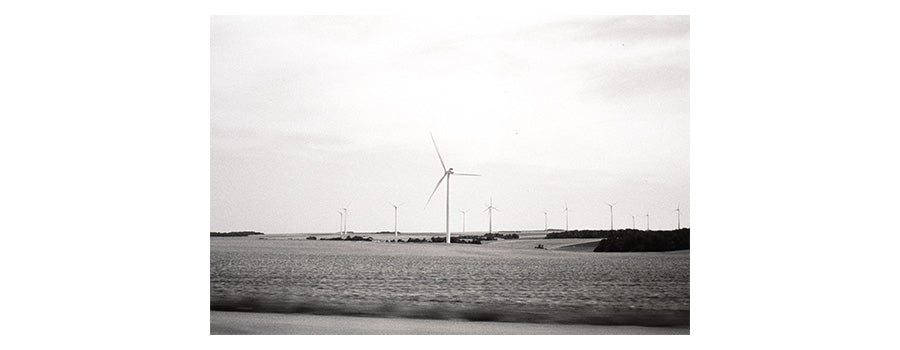
Leave a comment
Please note, comments must be approved before they are published
- Choosing a selection results in a full page refresh.
- Press the space key then arrow keys to make a selection.
Shooter Files by f.d. walker
Street Photography Tips, Interaction, Travel, Guides
Apr 24 2017
City Street Guides by f.d. walker: A Street Photography Guide to Moscow, Russia

*A series of guides on shooting Street Photography in cities around the world. Find the best spots to shoot, things to capture, street walks, street tips, safety concerns, and more for cities around the world. I have personally researched, explored and shot Street Photography in every city that I create a guide for. So you can be ready to capture the streets as soon as you step outside with your camera!
At over 12 million people, Moscow is the largest city in Russia and second largest in Europe by population ( Istanbul is #1). An urban, cosmopolitan metropolis with more than enough glitz and glam to cater to the elite, but without losing its fair share of Soviet era roughness around the edges. It can be fast paced, brash, busy, and trendy like other big cities, but it has its blend of West meets Russia atmosphere and beauty that provides plenty of unique interest. The Red Square is as famous as it gets, but there’s so much more to this city, including the most beautiful subway system you’ve ever seen. It would take years to capture all of Moscow, but that means you have an endless amount of areas to discover.

So here’s a Street Photography guide so you can be ready to capture all that Moscow has to offer before you even arrive!
- Patriarch’s Pond
- Old Arbat Street
- Maroseyka Street
- Tverskoy Boulevard
Top 5 Street Spots:
1. red square.
The Red Square is the most famous square in not just Russia, but all of Eastern Europe. The name actually doesn’t come from the color of the bricks or communism, but from the name in Russian, Krásnaya, once meaning “beautiful” before its meaning changed to “red.” This large plaza is what you see on the cover of guide books and magazines for Moscow, with St. Basil’s Cathedral being the center piece next to Lenin’s Mausoleum surrounded by the Kremlin Wall. Of course, the Red Square attracts hordes of tourist due to the main attractions, but all that activity around an interesting atmosphere does provide street photo opportunities. It’s also the central square connecting to the city’s major streets, providing a good starting point to explore outward.

You’ll also find the popular pedestrian only Nikolskaya Street connecting the Red Square to Lubyanka Square. This line of expensive shops includes plenty of activity, while also leading you to another popular square. Filled with history rivaling any city, the Red Square and surrounding areas are the heart and soul of Russia.

2. Patriarch’s Ponds
Patriarch’s Ponds is one of the most exclusive neighborhoods in Moscow. Despite the name being plural, there’s only one large pond, but it’s worth a visit with your camera. It’s a popular spot for locals and expats to come relax or take a stroll around the pond. You get an interesting mix of young and old too, from young love to “babushkas” feeding pigeons. It’s a very peaceful park atmosphere in one of the nicer areas within the city center, while bringing enough activity for street photography.

The pond is shallow and in the winter becomes a popular spot for ice-skating too. The area is also well-known for the location in the famous Russian novel, The Master and Margarita.
3. Old Arbat (Stary Arbat)
Old Arbat is the most famous pedestrian street in Moscow, and dating back to the 15th century, also one of its oldest. Originally, it was an area of trade, but soon became the most prestigious residential area in Moscow. During the 18th century, Arbat started attracting the city’s scholars and artists, including Alexander Pushkin. Cafes lined the streets and impressive homes filled the neighborhood. Since then, New Arbat street was created as a highway in the area, while Old Arbat was paved for a 1km pedestrian only walkway.

Due to the historic buildings, famous artists that lived here, and the bohemian atmosphere, Old Arbat has become a big attraction for tourists today. Now, there’s a mix of cafes, restaurants, souvenir shops, street performers, street merchants and other attractions for visitors, and some locals, to come enjoy. It can get really busy here and there’s usually something interesting going on so it’s a good street to come walk with your camera for guaranteed life.
4. Gorky Park
One of the most famous places in Moscow is Gorky Park. The official name is Maxim Gorky’s Central Park of Culture & Leisure, which gives you an idea of what goes on here. When built, it was the first of its kind in the Soviet Union. Divided into two parts, it stretches along Moscow River. One end contains fair rides, foods stands, tennis courts, a sports club, a lake for boat rides, and more. This end brings more active life due to its number of attractions, while the other end is more relaxed, where you’ll find gardens, trees, older buildings, and an outdoor amphitheater.

Gorky Park attracts mostly locals so it’s a good spot to capture the non-tourist side of Moscow life. Muscovites come here to escape the city and unwind in a picturesque setting. The park remains alive outside of the warmer months too, especially when the lake turns into the city’s largest outdoor skating rink. I’d recommend taking the metro out here to spend at least half a day exploring the massive park’s life with your camera.
5. Maroseyka Street
Maroseyka Street is a popular area not too far from the Red Square. The long, winding street turns into Pokrovka and is lined with restaurants, cafes, bars and places to stay. It’s actually where I like to stay when I’m in Moscow due to its location and solid street photography opportunities itself. You have Kitay-gorod station near and if you keep walking southwest, you’ll get to the Red Square. But if you walk northwest, as it changes to Pokrovka, you can find a long street of activity for photography with its own interesting atmosphere.

6. Tverskoy Boulevard
Tverskoy Boulevard is the oldest and longest boulevard in Moscow, beginning at the end of Nikitsky Boulevard, and finishing at Pushkin Square, a spot to come for activity itself. The boulevard is made up of two avenues, with pedestrian walkways in-between. You’ll find grass, shrubbery, trees, benches and more walking it’s almost kilometer length. Many people come here to enjoy some relaxation, walk their dog, or just to use it to walk wherever they’re going. Its center location also provides a nice place to walk with your camera near plenty of other spots you’ll want to check out anyway.
Sample Street Walk:
For a full day of Street Photography, covering some of the best spots, you can follow this sample street walk for Moscow:
- Start your morning walking around the Red Square (1), while exploring the surrounding area, including Nikolskaya Street
- Then walk northwest to Patriarch’s Ponds (2) and slowly walk the pond and surrounding area with your camera
- Next, walk east to the Pushkin Monument and stroll down Tverskoy Boulevard (6)
- Once Tverskoy Boulevard (6) ends, it will turn into Nikitsky Boulevard. Follow this down until you get to the start of Old Arbat Street (3), across from Arbatskaya station
- After you’re done walking down Old Arbat Street (3) for more street photography, spend some time checking out Moscow’s beautiful metro stations
- To finish off the day with more street photography, get off the metro near Red Square (1) again, Maroseyka Street (5) or wherever you’re staying for the night.

3 Things I’ll Remember about Shooting in Moscow:
1. museum metro.
The Moscow metro system was the first underground railway system in the Soviet Union and today includes 203 stations across 340km of routes. The elaborate system has some of the deepest stations in the world too, with escalators that seem to go on forever. None of this is what makes it so special, though. Many of its stations feel like stepping inside a museum, making it without a doubt the most interesting and beautiful metro system I’ve been in.

When built, Stalin wanted to make the metro stations “palaces for the people” with marble, chandeliers, and grand architecture. The best part is the variety of architecture and styles used, making many of the stations a completely different experience visually. You could easily spend a whole day traveling the stations and there are even tours available for people who wish to do just that. My advice, though, would be just to buy a ticket and hop on and off at different stations, while exploring different lines. The museum-like surrounding mixed with the crowds of characters can make for a great photography experience.

Since there are so many stations, here are some of my favorites to check out:
- Novoslobodskaya
- Mayakovskaya
- Elektrozavodskaya
- Komsomolskaya
- Ploschad Revolyutsii
- Dostoyevskaya
- Prospekt Mira

2. Moscow is Big
It’s no secret that Moscow is a big city, but it can feel even bigger with how spread out much of it is. This is especially true if you compare it to cities outside of Asia. If I compared it to cities in Europe, I’d probably say only Istanbul would warrant more time to really discover the depths of this city. Most only explore around the Red Square and surrounding area, but that is such a small part of the city. Although, that central area does give you plenty to see on its own.

Fortunately, I had a good friend living in the city to show me around, but it opened up my eyes even more to how much there is to discover in Moscow. It’s a big city with a variety of atmosphere that can take you from “east” to “west” and trendy to rugged depending on where you go. I’d imagine you’d have to live here a while to really know the city.

3. Cosmopolitan Mix of East meets West
Modern skyscrapers mixed with amazing architecture, a world-class metro system with museum-like beauty, trendy fashion and chic clubs, Moscow is a rich mix of Russian culture and history in a more western cosmopolitan package. There is a push to keep the Russian culture, while also pushing forward with a modern metropolis the whole world will envy. This comes with an impressive skyline, that continues to grow, and endless modernities, but with soviet nostalgia and atmosphere mixed in for good measure.

Mixed in with this grand western cosmopolitan atmosphere, is a strong national pride in Russia. This includes their famous leader, Vladimir Putin. Maybe no other place will you see a country’s leader more often. All over, from the pricey tourist shops to the underground walkway stalls, you’ll find goods with Putin’s likeness covering them. From t-shirts to magnets to Matryoshka dolls. There’s a strong national pride that can be seen around the city, which also extends to their leader. Moscow is many things. It’s East meets West, modernizations meets Soviet era, and a whole lot more.
What To Do For a Street Photography Break?:
Eat at a stolovaya.
Stolovayas are Russian cafeterias that became popular in the Soviet days. You grab a tray and walk down the line of freshly prepared local dishes, and select whatever you want from the chefs. They’re usually inexpensive and a much better value than restaurants, while giving you the opportunity to try from a wide selection of everyday Russian food. They’re also very tasty. I always include some borsch on my tray and go from there. The places themselves are all over Moscow and usually come with Soviet-era aesthetics to complete the experience.

Street Safety Score: 7
*As always, no place is completely safe! So when I talk about safety, I’m speaking in general comparison to other places. Always take precaution, be smart, observe your surroundings and trust your instincts anywhere you go!
Being the 2nd largest city in Europe with over 12 million people, you’re going to have your dangerous areas, but for the most part, it feels safe walking around. Russia is statistically higher in crime compared to most of Europe, but this generally doesn’t apply to tourists and visitors. Around the Red Square and surrounding city center, you should feel completely safe walking around. Pick pocketing can happen, but no more than other touristic places. I always explore Moscow freely without coming across too much to worry about. It’s a spread out city, though, so of course it matters where you are. Just use basic street smarts, know where you are and Moscow shouldn’t give you a problem.

People’s Reaction Score: 7
Moscow is fast paced, big city life, which usually means people aren’t too concerned with you, or your camera. I don’t find people notice or pay much attention to me when I’m out taking photos in Moscow. For the most part, people just go about their day. You shouldn’t get too many looks or concern. But it can depend on the area you are in. The more you stick out, the more you might get noticed with suspicions. I’ve never had any problems in Moscow, or Russia, but just be careful who you’re taking a photo of if you get out of the city center. Other than that, it’s about average for reactions.

Street Tips:
Learn the alphabet .
Much of Moscow, including the metro system, doesn’t use english. The Russian alphabet uses letters from the Cyrillic script, which if you aren’t familiar with it and don’t know the sounds, can be hard to decipher the words. This is most important for street names and metro stops when trying to get around. It can save confusion and make it easier getting around if you learn the basic alphabet. At the very least then, you can sound out the words to see which are similar in the english conversion, which can help matching them to maps. When out shooting street photography, getting around is as important as anything. So save yourself some time and frustration by learning the Russian Alphabet.

Use the metro
While Saint-Petersburg feels very walkable for a city its size, Moscow can feel very spread out, even for its bigger size. Outside of the Red Square area, you can have plenty of walking before getting anywhere very interesting, so you’ll need to take the metro a lot if you really want to explore the city. Maps are deceiving here too, it will always be further than it looks.

Another reason it’s less walkable than Saint-Petersburg is its completely different set-up. Moscow’s streets are mostly contstructed in rings with narrow, winding streets in-between. This is common with medieval city cities that used to be confined by walls, but you usually don’t have it in a city this massive. Saint-Petersburg has a more grid-like pattern that also uses the canals to help you know your way around. When it comes to navigating on foot in Moscow, it can be more difficult, so bring a map and take the metro when needed. It’s why Moscow’s metro carries more passengers per day than the London and Paris subways combined.
Explore other areas if you have time
Moscow is really big. While most people stay around the Red Square within the Boulevard Ring, there’s so much more to the city. I covered some other spots outside of this circle, but if you really want to see the city, you’ll need time. If you do have time, some other areas I’d check out first are Zamoskvarechye, along some of the south and western Moscow.

Inspiration:
For some more inspiration, you can look through the Street Photography of Moscow photographer Artem Zhitenev and check out 33 of my photos taken in Moscow .
Conclusion:
Moscow’s name brings a certain mystique, but once you’re there it might bring a different atmosphere than you expect. It’s big and sprawling, but beautiful in many ways. It can feel like a European capital on a grand scale, but you can definitely find its Russian side in there.

The urban sprawl of Moscow can be intimidating, but give it enough time and you’ll be rewarded with plenty to discover. All with the world’s best metro system to take you around.
I hope this guide can help you start to experience some of what Moscow contains. So grab your camera and capture all that Moscow has to offer for Street Photography!
If you still have any questions about shooting in Moscow, feel free to comment below or email me!
(I want to make these guides as valuable as possible for all of you so add any ideas on improvements, including addition requests, in the comment section!)
Click Here For More City Street Guides!
(A New Guide Posted Every Other Wednesday)

Comment Here! Cancel reply
For patreon exclusive educational content:.

Limited Edition Postcard Prints!
Street Photography Workshops
Donations Always Appreciated
I'll always keep Shooter Files free for everyone, but any donations would be greatly appreciated and help me keep it going. Many thanks to everyone following along!
Cheers! -f.d. walker
Search the Files

For Exclusive Patron Content:
- United Kingdom
- North America
- South America
- Australia & Oceania
- Sunlight map
- Moscow - Gagarin Square
What do you think about this webcam?
Find a hotel, hostel, apartment or other attractive accommodation in the selected location:
Report an inactive webcam
Before sending the application make sure that you meet all the requirements necessary to show the image from the camera.
You will find the required software in the section Help.
Please submit only cameras with the image older than 3 days or not showing image at all.
My favorites webcams
Moscow - City skyline
Moscow - Several views
Moscow - AFI Park
Moscow - Skyline
Moscow - Sokolniki
Vidnoye - Eco-Vidnoe
Mytishchi - Several views
Useful links
- Sign up now!
- Add a webcam
- Advertising
- Our partners
- Privacy Policy
Copyright 2004-2024 WorldCam ® . All Rights Reserved.
72 Fun & Unusual Things to Do in Moscow

- 0 Pinterest
Sure, Moscow is the Russian political capital and the nation’s most populous city, but describing it as such couldn’t be any further from the truth. More accurately, Moscow is a city of contrasts.
It exudes history — its Kremlin dates back centuries, nodding to royalty and leadership old and now, while the famed Red Square, the poster child of the city, blends striking color with ancient tradition and religion.
On the other hand, it’s a city of modern pop culture and towering skyscrapers; a place where you’ll come across new-age museums, arts centers, manmade parks, and an efficient transportation system that’s one of the most beautiful in Europe.
It’s a city of longstanding culture — the Bolshoi Theater is an international symbol for excellence in classical dance, while Russia’s National Ballet Company remains renowned worldwide — as well as upbeat nightlife, with some of the world’s most celebrated rooftop bars and nightclubs.
While it’s a city filled with opposites, there remains no shortage of things to do in Moscow for all types of travelers — from those who want cultural immersion to those looking for an epic night out, you’ll be spoiled for choice. And if you’re not sure where to start, here’s a list of suggestions!
The Moscow Kremlin
If there’s any particular district begging to be the first place you visit on your trip, it’s the Kremlin.
Built in the 16th century by Ivan the Terrible, the UNESCO-listed area has since become the heart of Russia’s capital city, where you’ll find several churches, palaces, and other noteworthy buildings.
We’ll dive into each of its main attractions in a second, but regardless of what you visit, try to make it to the Kremlin in time for sunset — because seeing its golden domes glinting in the late-afternoon light makes for one spectacular tourist photo!
Click here to learn about Kremlin tickets prices .
1 – Admire the abundance of Kremlin towers | the Kremlin

As your eyes dart down the towering red-brick Kremlin wall, the first thing you’ll notice is its large towers of all different styles and sizes.
With a whopping 20 separate minarets towering above the historic area, each with its own name, colors, features and history, a guided tour to learn each of their fascinating stories is a must.
To give you a little taste, the Konstantin-Yeleninskaya Tower once housed a torture chamber. Saviour’s Tower at the main entrance boasts a famous chiming clock, the Secret Tower houses a secret escape tunnel, and the Trinity Tower is the tallest of them all.
- Moscow Kremlin tours
2 – Visit the enormous Grand Kremlin Palace | the Kremlin

A remarkable attraction in terms of both beauty and history, the Grand Kremlin Palace is an ornate rococo-style building that was commissioned during the reign of Nicholas I, and today acts as the official residence of none other than the Russian president, Vladimir Putin.
Perched atop Borovitsky Hill, its 125-meter-long facade is unmissable, making for impressive photos.
Take note: guided tours are few and far between, so you’ll have to book a few weeks in advance if you want to check out the decorated inner sanctum.
Directions in Google Maps
3 – People-watch in Cathedral Square | the Kremlin

One of the most popular areas in all of Moscow (sometimes called Sobornaya Square), with multiple massive churches at its heart, Cathedral Square is flanked by several historic buildings and is never shy of a tourist crowd.
The three main churches — each spectacular works of architecture in their own right — are the Cathedral of the Assumption (the oldest and the biggest of all Kremlin churches), the 16th-century Cathedral of the Archangel Michael (known for its beautiful Corinthian gables and turrets), and the golden-domed Cathedral of the Annunciation (which connects to the Grand Kremlin Palace’s main building).
Throw in the 60-meter-high Ivan the Great Bell Tower, the lesser-known Church of the Twelve Apostles , the Church of the Deposition of the Virgin’s Robe (underrated yet famous for its marvelous stained-glass windows), and the medieval residence-turned-museum that is The Patriarch’s Palace, and you can see why this square is regularly number one on any visitor’s list of things to do in Moscow.
4 – See a show at the State Kremlin Palace | the Kremlin

Just like the Grand Kremlin Palace , this theater and prestigious concert hall — with its grandiose facade and multiple sculptures — is another ornate building that’s worth admiring.
A popular place to hold conferences, the State Kremlin Palace was originally built as part of a larger complex for Communist Party meetings, but today hosts some of the biggest events in Moscow — we’re talkin’ sold-old ballet performances, world-famous concerts, opera shows, and festivals.
Check the website to see what’s on the calendar for your visit!
5 – See centuries worth of national treasures at the Armoury Chamber | the Kremlin

For anyone with an interest in historical weaponry and armor, this museum — which dates back to the early 1500s when it was created as the royal armory — is a must-see.
The Armoury Chamber (as well as the Diamond Fund Exhibition) is home to some of the most valuable objects that were originally owned by Russian monarchs — from jeweled heirlooms and intricate boxes to ornately decorated pistols and swords — many of which are centuries old.
Within the armoury chamber, you’ll also find the Russian historical regalia, a collection of artifacts that belonged to Russian tsars and emperors between the 13th and 20th centuries, highlighted by the Ivory Throne and the Monomakh’s Cap.
- Armoury Chamber tours
6 – Step inside the Palace of the Facets | the Kremlin

The Palace of the Facets is one of the most underrated buildings in all of Moscow, largely because it’s not as widely promoted or photographed even though its exterior adorns some postcards.
From the outside, it blends in with the crowd. But step inside and you’ll discover a world of beauty and wonder — its frescoes, golden columns and enormous rooms are a sight to behold
The Palace of the Facets is not only a piece of art (literally, with painted walls), dating back over 500 years, but also acted as the dining hall for the Tsars.
7 – Feel small next to the Tsar Bell | the Kremlin

Making Philadelphia’s famous Liberty Bell look diminutive in size, this monument , which never actually functioned as a bell due to its immense size (at 205 tons and standing 20.1 feet high!), has found fame in recent years for being the heaviest attraction inside The Kremlin.
With the bronze landmark’s claim to fame of being the biggest bell in the world, it presents as a great, quick photo op when roaming through the Kremlin.
8 – Check out the Senate Palace | the Kremlin

Another architectural masterpiece that’s tucked away within the Kremlin, this palace is famous for being one of Moscow’s most beautiful buildings — its yellow façade curves around to face inward and truly engulf anyone who stands near it.
Built back in the late 1700s, today it houses the Russian presidential administration and, unfortunately for us, is off limits to the general public.
Still, admiring it from outside, with the nearby Tsar Cannon, is certainly good enough.
9 – Grab a photo in front of the Tsar Cannon | the Kremlin

One of Moscow’s most iconic symbols, Tsar Cannon (or Royal Cannon) is a cannon that was manufactured in 1586 and resides — yep, you guessed it — within The Kremlin.
Following the theme of the enormous Tsar Bell, it weighs a whopping 39 tons — making it one of the world’s largest cannons even though it has never been shot.
And while its size may be impressive on its own, what makes this cannon so special is that it’s adorned with intricate carvings, ornaments, inscriptions, and a figure of a horse-riding Tsar Feodor the Bellringer.
- walking tours in Moscow
10 – Join a tour of the Terem Palace | the Kremlin

A stunning, fairytale-like palace that’s steeped in history and detail, the five-story Terem Palace is one of the most underrated attractions within The Kremlin. However, as part of the official residence of the Russian President, much of it is off-limits to snap-happy tourists.
That said, there’s still plenty to be seen in the accessible areas by joining a group tour: a beautiful white-stone carved staircase; curved, decorated, and painted ceilings; and an enchanting low-vaulted Antechamber with lancet windows.
The Red Square
As we move away from the Kremlin, our next stop is the most photographed, picturesque public area in the country.
Flanked by gorgeous, colorful towers and buildings, the Red Square is the most famous square in all of Russia — and one that’s steeped in history, patriotism, and communist symbolism.
Home to some of Moscow’s greatest landmarks including St Basil’s Cathedral (featuring its iconic onion domes), Lenin Mausoleum, GUM department store (an architectural masterpiece that is the most famous shopping mall in Russia), The State History Museum, and more, it’s not just a sight to see in Moscow but also one that has been seen by hundreds of millions from around the world.
11 – Make your way inside St. Basil’s Cathedral | Red Square

Built back in the early 1500s, this quirky-looking, 65-meter-tall Orthodox church is so unique and detailed that it’s earned its place as one of 16 UNESCO cultural sites in Russia — and, thanks to many Hollywood productions like Bond: Skyfall (2012), has only continued to increase in fame.
Its exterior boasts multi-colored domes crowned with golden onion top spires. Meanwhile, inside, you’ll find nine small, separate chapels, and plenty of decorated walls and windows — all best viewed as part of a walking tour of Red Square.
- Red Square tours in Moscow
12 – Visit the State Historical Museum | Red Square

One of seven museums that can be found around the expansive Red Square, the State Historical Museum is one of Moscow’s most revered.
Housed in a neoclassical building (the same as GUM), it features more than 4 million items relating to Russian history — making it so vast and incredible that you’ll need at least two hours inside to see just a fraction.
While you’re in the area, be sure to check out the Marshal Georgy Zhukov Monument, a towering horse-riding statue of arguably the most famous and heroic Soviet military commander of WWII, which can be found in front of the museum.
13 – Shop till you drop at GUM | Red Square

The official state department store of Russia, having opened in 1893 and become one of Moscow’s most iconic attractions for shopaholics over the years, is known for its gorgeous architecture that looks more like a palace than anything else.
Entering through its massive golden doors, you’ll be surprised to find an extensive shopping center with more than 100 luxury and world-renowned brands of clothing and accessories for men, women, and youngsters.
Even if you don’t plan on buying anything, stop into the Gastronom №1 for a bite to eat or take a stroll through its corridors to appreciate the building’s history and beauty.
14 – Visit Lenin’s Mausoleum | Red Square

Another iconic Red Square attraction is Lenin’s Mausoleum, a small yet foreboding building that houses the embalmed corpse of Communist leader Vladimir Lenin (who led Russia through the Bolshevik Revolution of 1917).
Opened in 1930 after his death and standing at more than 12 meters tall, it presents as both a unique and macabre site — and, considering the life-like nature of the body, certainly isn’t for the faint of heart.
Note: Entrance is free of charge, but expect to be searched by security before being allowed in.
15 – Ride the Moscow Metro, enjoying the beautiful stations along the way

As we leave the Red Square, the next cab off the rank is Moscow’s unbelievable artistic Metro network (rivaled only in beauty by that of Stockholm). Constructed between the 1930s and 1950s, its stations were built by hand with a wide range of artistic themes — from socialist realist to Slavic pagan.
Tips: The best way to experience them is as part of a Moscow Metro tour, which can be booked online. However, if you prefer exploring solo, then make sure to visit the Mayakovskaya Metro Station which is known for its seemingly endless archways.
You may also check out Dostoyevskaya, named after a famous writer with murals depicting his stories. The Ploshchad Revolutsii Metro Station is another option where a handful of Socialist statues provide a wonderful contrast to the red marble arches.
- metro tours in Moscow
16 – Spend the afternoon exploring the State Tretyakov Gallery

Boasting the reputation of being one of the world’s leading art museums, the State Tretyakov Gallery is home to a stunning collection that features well over 100,000 works from Russia and around the globe.
Featuring everything from ancient Russian icons to Soviet-era artifacts and contemporary pieces, the museum also houses a charming green garden perfect for recharging.
Visitors are advised to allocate at least three hours inside to properly appreciate everything on show — or consider booking a private VIP tour to skip the lines and focus on the best sections.
- Tretyakov Gallery tickets
Click here to find out the best Moscow tours .
17 – Get out of town to the Tsaritsyno Museum & Nature Reserve

Located a short drive from the hustle and bustle of the Red Square, this incredible attraction is both a palatial museum and cultural center, with an enchanting open-air garden to boot — spread across 405 hectares altogether.
Boasting beautiful 18th-century baroque architecture, it was originally built as a country retreat for Catherine the Great. However, it has since been transformed into an outdoor museum with several museums inside — including exhibits dedicated to Russian history and culture.
18 – Tick off the main haunts with a hop-on hop-off bus ride

Short on time or just can’t be bothered walking around anymore? Then make sure to check out the double-decker Hop-on-Hop-off Bus, a convenient and cheap way of seeing all the main attractions in one go.
With unlimited-ride tickets lasting between 24 and 72 hours, there’s plenty of flexibility to soak in must-see areas like Red Square, the Kremlin, Arbatskaya Square, Theatre Square, and the Red October neighborhood — and with a free audio tour (in English) throughout the ride, you’re sure to learn a thing or two as well.
Busses usually run every 15 minutes, with the full city loop taking roughly an hour — of course, you can disembark and reboard to your heart’s content.
- bus tours in Moscow
19 – Learn about military history on Poklonnaya Hill

For an up-close and personal experience with the past, make sure to check out Poklonnaya Hill — a UNESCO World Heritage Site about 20 minutes out from the city center that’s home to several relics from Russia’s pre-revolutionary era.
It has everything from Great Patriotic War memorials dedicated to fallen soldiers of the Russian military forces, to the Eternal Flame and the Museum of Great Patriotic War. This is an unmissable opportunity for history buffs.
Hot tip: While you’re in the area, be sure to stop into the Victory Museum (the nation’s biggest military history museum) and check out the gold-tipped Church of St. George the Victorious .
20 – Get artsy at the Pushkin State Museum of Fine Arts

Home to one of the finest and most significant art collections in Russia, the highly-regarded Pushkin State Museum of Fine Arts showcases everything from medieval icons and paintings. With over 500,000 pieces of works by renowned artists like Rembrandt, Renoir, Picasso, Matisse, Karl Bryullov and Rubens, the museum is undeniably one of the best things to do in Moscow for art lovers.
The museum also houses impressive exhibits dedicated to ancient Greece, archaeological collections, decorative arts and a 200,000-item Numismatic library.
21 – Take a charming stroll down Arbat Street

Boasting everything from galleries and craft stores to souvenir shops, cafes, and some of Russia’s finest restaurants and hotels — as well as top-notch street performers (like jugglers and caricaturists) — Arbat Street is one of Moscow’s most famous pedestrian hubs for good reason.
The entire walkway, flanked by colorful buildings, stretches about a kilometer through the historic district, making it the perfect start to any day of inner-city exploring.
22 – Lounge around at the Gorky Central Park of Culture and Leisure

One of Moscow’s biggest and most beloved green spaces, Gorky Central Park is a must-visit for anyone looking to soak in some fresh air.
The park boasts 45 hectares of picturesque grassland, forests, Golitsinsky Ponds (home to squirrels and ducks), walking trails, fountains and the Neskuchny Garden. This place is also home to the wooden Olivkovy beach, a hot spot for photographers looking to appreciate the Moskva river.
Plenty of cafes line the well-manicured park, likewise public art projects and picnic spots and an open-air cinema in the summertime!
While a relaxing day in the gardens is never a bad idea, if you’re looking for something a little more interactive, there’s the 18-meter-tall Observation Platform and a handful of museums on site. The Gorky Park Museum , Muzeon Park of Arts , Garage Museum of Contemporary Art and New Tretyakov Gallery are all noteworthy stops within walking distance.
23 – Stare at the ceiling of the Christ the Savior Cathedral

On an easy stroll from the southwest side of the Kremlin, you’ll find a majestic memorial cathedral doused in history: the 5-golden-domed Christ the Savior Cathedral .
With a beautiful color-contrasting exterior that still falls short of the intricately painted inner walls and ceiling, this underrated (due to not being in Red Square with the other main cathedrals) attraction is a must for the bucket list.
24 – Zoom around town in a Soviet van

If a hop-on-hop-off bus screams of cliche tourism, why not get a little more cultured by skirting around the city’s main haunts in a real, war-era soviet van?
Undeniably one of Russia’s most emblematic vehicles as both a symbol of a Soviet past and a comical cultural nod to its boring exterior (dubbed the “loaf of bread”), the UAZ-452 vans are iconic.
So whether you opt for a pub crawl, landmark sightseeing tour, or day of adventure with wintertime off-roading, be sure to ride shotgun in one of the loaves of bread at some stage!
- soviet tours
25 – See sharks up close at the Moskvarium

The mightiest aquarium in Europe (by size), the Moskvarium is an impressive modern space dedicated to the beauty and diversity of aquatic life.
Located right on the outskirts of Moscow’s city center (about 20 minutes drive from Red Square), this huge complex encompasses over 70 interactive exhibits. These include live shows, and the chance to go swimming with dolphins — that are sure to impress the whole family.
26 – Go underground at the Bunker 42 Cold War Museum

In the depths of Moscow’s shadow-strewn streets, hidden 65 meters beneath the tourist crowds are a Cold War-era bunker and former secret communications center.
Bunker 42 was built in 1955 as a nuclear-proof hideaway, but today you can book tours that reveal its secrets and stories — a must for the common history buff.
- Bunker 42 tickets
27 – Immserve yourself in the soviet culture at the VDNKh theme park and exhibition space

Sprawling across the Ostankinsky District, VDNKh is a massive open-air museum and theme park paying homage to Russian industry and Soviet values.
The enormous complex is decked out with several gold-clad statues and palatial pavilions, each uniquely designed to represent different Soviet interests and endeavors, such as geology and the space race.
Hot tip: For a wonderful view of the Moscow skyline, be sure to jump on the Ferris wheel after riding the small roller coasters and merry-go-round.
28 – Take a trip to the Kolomenskoye Palace

Overlooking the sparkling Moskva River about 20 kiometers south of central Moscow, the postcard-worthy Kolomenskoye Palace is a former royal estate. It’s now open to the public as an extensive park with carefully-kept gardens, including one of Russia’s oldest white stone churches (the tent-looking UNESCO-listed Ascension Church ).
It has walking trails through peaceful wooded areas and gorgeous views out over the region from its high hilltop location. The park has long been considered one of the hidden gems when it comes to things to do in Moscow.
29 – Enjoy the view from the Ostankino TV Tower

With the coveted claim to fame of being the tallest free-standing structure in Europe (and 11th tallest in the world) — standing above the Empire State Building, for reference — the 540.1-meter-tall Ostankino Tower is picturesquely located next to Park Dubovaya Roshcha, not too far from VDNH, the Moskvarium, and the widespread Park Ostankind.
So long as you’re not left lighthearted by heights, the 337-meter-high observation deck is the go-to spot for panoramic views.
30 – Blast off at the Museum of Cosmonautics

One for the space nerds and future astronauts, the Museum of Cosmonautics is dedicated to the history, present-day relevance, and future possibilities of space exploration. It provides a spectacular insight into the Soviet perspective of the 1960s space race.
Located on a lovely green site in one corner of VDNKh, the museum features an outdoor planetarium, interactive displays for children, as well as inside exhibits that showcase original spacecraft parts.
For the best experience, consider a pre-arranged tour that includes access to both the Museum and VDNKh.
31 – Complete your Moscow culinary experience with a food tour

Foodies, listen up! Moscow has gained a reputation for being one of the finest cities in Europe for foodies, with an excellent range of restaurants and bars.
For those looking for a complete Moscow culinary experience that includes some of the best hidden gems and experiences, food tours are an ideal way to go.
Depending on your tour of choice, expect to sample a few Pelmeni (dumplings), Blini (wafer-thin pancakes), and world-famous Ponchiki doughnuts. Then wash it all down with some locally-distilled vodka or Nalivka (a sweet berry-infused liquor).
- food tours in Moscow
32 – Smell the flowers at the Main Botanical Garden — the largest botanical garden in Europe

Constructed in 1945, the Main Botanical Garden of the Russian Academy of Sciences is a 340-hectare space of plant collections and lakeside walkways to explore.
It’s one of those places that gets better as you make your way around it on foot (or even rollerblades). There are many well-kept gardens, beautiful ponds filled with turtles and waterfowl, a charming Japanese Garden and some very rare trees.
33 – Wander around the Novodevichy Monastery

The Novodevichy Convent and surrounding Kremlin-style walls combine to be one of Moscow’s most picturesque sites — a UNESCO-listed complex that was founded in the 1500s and includes an interweaving of churches, cathedrals, bell towers and a cemetery.
After admiring the buildings, check out the monastery which is surrounded by green spaces perfect for a stroll and a snack.
To learn all about its architecture and history, opt for a guided tour as recommended by most travelers.
34 – Ride the coasters at Family Park SKAZKA

If you’re traveling with youngsters who seem to never be able to burn off their energy then make a beeline for the Krylatskoye District neighborhood, home to the popular SKAZKA adventure park.
Kids can enjoy everything from bumper cars to the petting zoo, while parents might want to pop into one of the cafes or restaurants.
Even if you don’t have kids in tow, the adrenaline-pumping roller coasters invite thrill-seekers of all ages.
35 – Understand the deeper meanings of “Soviet Jew” at the Jewish Museum & Centre of Tolerance

Opened in 2012, the Jewish Museum and Centre of Tolerance is a fascinating institution dedicated to exploring and honoring the diverse complex Russian-Jewish history and culture.
Explore every facet of the role of Russian Jewry throughout the centuries — including food, artifacts, religious beliefs and cultural traditions. Visitors can also see an array of exhibits made from testimonial footage, as well as a large collection of works of Jewish artists.
For history buffs, the museum dives into the intriguing role that Jewish soldiers played during World War II.
36 – Cruise down the Moscow River!

For those looking for a unique perspective on the city, there are stacks of tours (romantic, sightseeing, luxury-themed or party-vibed) that explore Moscow from its riverfront.
Take in some of the most iconic landmarks around the Kremlin and Gorky Park on a boat. Cruises can also take you underneath bridges, entertain you with live music and offer insights into the landmarks that pass by with live audio narration.
- boat tours in Moscow
37 – Grab a table at Café Pushkin

A favorite of many Muscovites, Cafe Pushkin on Tverskoy Boulevard is an intimate spot to enjoy some authentic Russian dishes.
It’s hand-picked by locals for its traditional décor resembling a nobleman’s house and charming atmosphere (thanks largely to the rustic bookshelves). You’ll find that the menu consists mainly of classic European cuisine mixed with a few local favorites. It’s complemented by a wooden bar with a fine collection of vintage wines and regular live music.
38 – Spend the day at the Karibiya Aquapark

After a hard day exploring the city, why not spend some time out to relax and unwind at one of Moscow’s largest water parks?
Karibiya has a handful of pools (including a heated salt-water spa) and fun but not too wild slides, plus a bowling alley for the kids, a fitness center and bar for the adults. There’s something to keep everyone entertained.
39 – Take a day trip to Sergiev Posad

A photographer’s dream with blue-and-gold cupolas contrasted by snow-white walls, the ancient town of Sergiev Posad (just over an hour’s drive from Moscow) is a quaint tourist favorite. It’s famous for being home to one of Russia’s most important and sacred monasteries — the free-to-visit Trinity Lavra St. Sergius monastery complex.
Founded in 1340 AD by Saint Sergius, today it serves as an active monastery where visitors are free to attend daily services. Admire its truly remarkable artworks and historic museum collections.
- Sergiev Posad day trip
40 – Spot starfish (and monkeys?) at the Crocus City Oceanarium

One of the latest attractions in Moscow, Crocus City Mall’s iceberg-shaped Oceanarium is a vast three-floor aquarium. It has more than 5,000 species swimming gracefully under one roof — not to mention the reptiles, birds, and monkeys that also call this place home.
Since the mall also boasts shopping centers, a pair of concert halls and a skating rink, there’s no shortage of activities on offer to whisk away a rainy day.
41 – Button-mash at the Museum of Soviet Arcade Machines

Where are the gamers at?
For anyone curious about the video games and technology of Russia’s yesteryear, there’s no better place to visit than this retro museum (complete with Soviet-era soda).
Filled with an impressive collection of more than 100 vintage arcade machines dating back as far as the late 1970s (like ”Pull the Turnip”), it’s sure to take you on a trip down memory lane.
42 – Take a walk through the Alexander Garden

While the majority of Moscow’s other top attractions require a ticket or entry fee, there is at least one gem that doesn’t. It happens to be right on your doorstep if you’re staying anywhere near the Kremlin.
Alexander Garden (also known as Alexandrovsky Sad) is an expansive park that stretches the entire western wall of the Kremlin (nearly 1km in length). It’s filled to the brim with colorful flower beds, winding walkways and calming fountains.
Don’t miss the tomb of the Unknown Soldier while you’re there.
43 – Sign up for a dog sledding adventure!

Cliche? Sure, maybe a little. Seriously fun? You better believe it!
Winter is coming, and that means it’s time to get out there and experience Russia the way only locals can — by dog sledding.
Typically lasting seven or eight hours, these outdoor adventures (which include hotel pick up and drop off) are a wonderful way to experience nature and immerse yourself in ancient Russian traditions — and hang out with a handful of adorable huskies, of course!
Seriously though, this is one of those things you’re going to want photos (and videos) for when you get back home because, really, words just wouldn’t do it justice.
44 – Walk beneath the Iberian Gate and Chapel

Facing away from the Red Square and linking Manezhnaya Square, the Iberian Gate and Chapel (sometimes called the Resurrection Gate) is overflowing with history. It acts as the spiritual entrance to the Red Square and the home of the wooden chapel that houses icons of the Iberian Virgin.
Many believe it is customary to kiss the Iberian icon before entering the gate and for boys to take off their hats. For an insight into the local culture, join a walking tour and learn more about the gate’s significance to religion and history.
To add to the importance, the gate is also the location of ‘Kilometer Zero’ — the official central point of Moscow.
45 – Play all day at the Dream Island theme park

After opening its gates early in 2020, Dream Island earned itself the coveted title of being the largest indoor theme park in Europe (yep, that means it’s even open in the harsh winter).
It’s a delight for kids and adults alike. Throughout the park you’ll find an array of rides themed around classic cartoons like Teenage Mutant Ninja Turtles, Pinocchio, the Smurfs, Hotel Transylvania and Hello Kitty. It also has charming and well-arranged streets that transport you to bustling cities like London and Barcelona!
Throw in live performances, plenty of eateries, a cinema and a hotel, and you can see why it’s become all the rage recently.
46 – Race against the clock in an escape room

An unmissable and quick activity for any budding Sherlock Holmes out there, escape rooms challenge your mind and require wit, teamwork, and logic. Figure out the puzzles and escape from each room before time runs up.
Moscow’s escape room games usually last around 60 minutes and cover a range of themes (like a USSR Nuclear Bunker or even an outdoor, app-led scavenger game) — perfect for the whole family.
47 – Chill out by the Patriarch’s Ponds

Surrounded by residential buildings in the fancy downtown Presnensky District, the enormous (9,900 square meters, to be exact) the Patriarshiye Prudy is a beautiful oasis. It’s frequented by dog walkers, picnickers, artists and musicians alike.
In summertime, you’ll find people picnicking on the grassy banks or sunbathing by the ponds. In the winter, it transforms into a magical wonderland of snow and ice, morphing into a popular public skating rink.
Directions on Google Maps
48 – Go behind the scenes at Luzhniki Stadium

Moscow’s Lujniki Stadium is one of Europe’s biggest soccer complexes, capable of hosting some 80,000 fans with an electric-like atmosphere — as we saw during its phase as the main stadium of the 2018 FIFA World Cup.
Besides being the current home ground of Russia’s National Football Team, it also hosts concerts by some of the biggest international acts and was also the focal point of the 1980 Olympic Games.
If your trip doesn’t line up with any sellout matches, you can still join a backstage stadium tour that explores the dressing rooms, press conference room and the field.
49 – Head to Suzdal and Vladimir for a day

A fantastic option for anyone who wants to get out of the chaos of Moscow for a minute, these two towns are parts of the Golden Ring of ancient Russian cities. They present as perfect day trips, thanks to their rich history, diverse culture and white-drenched architecture.
In Suzdal , the Kremlin fortress is the main event, with the Cathedral of the Nativity (and its 13th-century Golden Doors) captivating visitors year after year. In Vladimir , the awe-inspiring Assumption Cathedral (Dormition Cathedral) teaks center stage, with its five golden domes making for a wonderful photo backdrop
Don’t feel like hiring a car? Take the hassle out of your getaway and book a pre-arranged tour that visits both ancient towns on the same day.
50 – Escape the crowds at the Botanic Gardens of Moscow State University

Wielding the title of Russia’s oldest botanic garden, the Botanic Gardens of Moscow State University (founded in 1706) is a fantastic place to escape the city and learn about Russia’s rich flora.
The beautifully arranged garden boasts more than 6,000 plant species that span various climates across the world, allowing visitors to see everything from roses and tulips to cacti and bamboo trees!
51 – Climb inside a tank at the Kubinka Tank Museum

A must-see for any military history buff, the Kubinka Tank Museum showcases dozens of tanks and armored vehicles from across the globe, with a particularly heavy focus on Soviet Union models (to be expected, right?).
The collection includes everything from Polish TKS tankettes to the only remaining Panzer VIII Maus, a captured WWI British Mark V and the Object 172 — as well as plenty of cannons, weapons and missiles.
Serving traditional Russian military meals and national staples, even the cafe-restaurant is military-themed!
52 – Sit front row at the Moscow International House of Music

A world-renowned performance complex on the picturesque Kosmodamianskaya Embankment, this state-of-the-art venue is best known for hosting Vladimir Spivakov’s Virtuosi of Moscow Chamber Orchestra. It showcases everything from classical concerts to jazz, folk music and more!
The venue’s three magnificent concert halls welcome an array of local and international performers. Check the website to see who’s taking center stage during your visit!
53 – Drift through fresh powder on a snowmobile!

While it’s not always winter (though if you want to make the most of your snowy trip, come between December and March), as soon as that first snowfall hits, it’s time for snowmobile tours. Make for a fantastic way to explore the out-of-the-way locations and magical forests beyond Moscow’s city limits.
Even if you’ve never ridden a ski-doo or snowmobile before, the friendly expert instructors will be with you every step of the way, with safety and enjoyment always priorities.
54 – Crank your head skywards in Moscow City

A stark contrast to the ancient and colorful onion domes in the Red Square, Moscow City’s skyscape (aka the Moscow International Business Center ) is full of towering, modern glass-heavy (even twisting) skyscrapers. Many of which are vying at the top of the list of Europe’s tallest buildings.
At 374 meters tall and with 95 floors — and a wonderful restaurant on its 60th floor — the Moscow Federation Tower is a popular choice for tourists. Meanwhile, the 85th and 86th floor of the OKO Towers play host to a Russian restaurant and skating rink respectively.
Be sure to walk through the modern Bagration Bridge and, for the shopaholics, check out the stores and IMAX theater inside AFIMALL City.
55 – Check out Zaryadye Park

Within arm’s reach of the famed Red Square, the peaceful slice of greenery that is Zaryadye Park is a breath of beautiful and natural air amidst the concrete jungle. It’s the first new city park to be opened in Moscow for more than half a century.
At various points around the 10-hectare park, you’ll find a few restaurant pavilions, a media center, a museum and a botanical collection housing over a million plants. It also houses the two-stage Zaryadye Concert Hall where thousands of passersby take a seat on the steps every day.
While you’re there, don’t miss the Chambers of the Romanov Boyars, an unusual museum above the northern side of the park.
56 – Stroll around the cozy Hermitage Garden

Small yet incredibly charming and found conveniently smack-bang in the middle of the city, the Hermitage Garden is a perfect spot to relax and unwind after a day of learning about Russia’s vast history.
Surrounded by the Sfera Theatre and The Kolobov Novaya Opera Theatre of Moscow , this lovely, leafy garden can be both a relaxing oasis or the prelude to an entertaining evening out.
57 – Treat yourself to a ballet show at the Bolshoi Theatre

With a reputation that precedes it, the impressive and world-famous Bolshoi Theatre is a must for any theater lover. Its rich history is making it one of the most iconic theaters in Europe.
While there are several performances to choose from throughout the year — from ballet to opera, classic dramas and even acrobatic shows — you can also get your own private backstage tour.
58 – Get artsy, then party at ArtPlay

This old tea factory turned cultural hub of Moscow’s creative arts is heaven on earth for rotating exhibitions by local artists.
Depending on what piques your interest, you can join in on everything from live music to dance classes, art studio workshops, flea markets and film screenings here. However, after the sun goes down, its alter-ego comes out to play.
So, if you’re feeling peckish, stop into the Domozhilov restaurant nearby for a shashlik. Then wash it down at the English pub with a beer before partying it up at Rodnya, a pumping techno club.
59 – Head to the PANORAMA360 Observation Deck

A surefire hit for the social media feed, the observation deck at the top of Moscow’s Federation Tower skyscraper — PANORAMA360 — is a must-see selfie stop for its killer views and … ice cream factory.
From the 89th floor, you can soak in the wonder of Moscow old and new from above. It has floor-to-ceiling windows providing 360-degree vistas, a rotating restaurant and mini-cinema to boot.
60 – Throw down a picnic blanket in Sokolniki Park

One of the largest green spaces in Moscow, Sokolniki Park is a very popular gathering place for locals and visitors alike.
Spread across the northeastern Sokolniki District, it’s the perfect distance from the city’s main haunts where the crowds remain small but the accessibility stays high.
With its many activities — from sports to live music to festivals — not much beats this park when it comes to outdoor fun!
61 – Catch a traditional Russian dance show

To get a true sense of the rich and diverse culture in Moscow, you can’t go past one of its many folk dance shows.
While there are several to choose from, “Kostroma” and “The Golden Ring” are two crowd favorite choices. Each is thoroughly unique with traditional music and costumes sure to make for a once-in-a-lifetime night of entertainment.
Of course, due to high popularity, be sure to book in advance.
62 – Book a table at the White Rabbit restaurant bar

Perched above the historical center of Moscow on the 16th floor of the Smolensky Passage building, this lavish restaurant is a must-visit for any foodie-obsessed traveler. Why? Because it continually ranks as one of the top 50 restaurants in the world.
The drool-worthy menu made by fifth-generation chef Vladimir Mukhin consists of creative, beautiful plated meals. The coveted eaterie also boasts 360-degree panoramic views of the city and a fine collection of wines and cocktails.
63 – Have dinner inside the Vysoko-Petrovskiy Monastery

Whether you’re an architecture or history buff, while visiting Moscow, it would be a shame to miss out on the rare chance to eat in an actual monastery.
This one is particularly special as it dates back some 700 years. Not only will you get to dig into an authentic Russian menu, but learn about the history of the building and (depending on your booking package) get a guided tour too.
64 – Pass by the ‘Children Are the Victims of Adult Vices’ sculpture

This free public art installation in Bolotnaya square was created by Mihail Chemaikin in 2001. A somewhat controversial landmark, it depicts how children are influenced by vices — alcohol, theft, ignorance, violence, addiction, poverty and war, to name a few.
The sculpture’s uniqueness and thought-provoking nature makes it an essential stop on any day of wandering around.
65 – Get wild on a pub crawl!

You’re on vacation, so it’s time to let your hair down, mingle with some fellow thirsty travelers and party it up Moscow-style!
High-energy pub crawls are a great way to get acquainted with new friends while seeing Moscow’s unique nightlife scene first-hand. Let the locals lead you to hidden gems, tourist hot spots and quirky dive bars.
If you don’t feel like walking, why not join a Soviet minivan crawl instead (where you can drink Soviet champagne onboard!)?
66 – Roll up for the Nikulin Circus!

If you haven’t had the chance to see a live circus before — and especially if you’re traveling with kids — why not head over to the Nikulin Circus on Tsvetnoy Boulevard?
It blends traditional Russian acrobatics with modern-day technology, animals, and the classic circular circus stage. This beloved local entertainment is also considered one of the most enjoyable things to do in Moscow!
67 – Get romantic on a Moskva River dinner cruise

What better way to take in the city’s skyline than from a luxury yacht as you enjoy entertainment, fine dining, and (strong) specialty drinks?
Whether you’re looking for something large that can accommodate groups of friends or something smaller with a bit more VIP style, there are several dinner cruises available to suit any taste and budget.
68 – Explore the wonderful Izmailovo District

One of the city’s best-kept secrets, Izmailovo ‘s focal point is its Kremlin, a colorful wooden complex. Built in 2007, it has had unique museums and flea markets pop up nearby in the years since.
Throughout the area, you’ll uncover museums dedicated to vodka, break and Russian folk art. The district’s charming open-air flea market has all kinds of crafts and souvenirs are haggled on the daily.
Don’t miss Izmailovo Park , which is an enormous 300-hectare space that plays host to souvenir vendors, forest walking paths and even an ice rink in winter.
With so much to see in the district, savvy travelers typically opt for a guided tour.
- Izmailovo tours
69 – Sip on a cocktail at the award-winning City Space Bar and Lounge

Self-dubbed as one of the world’s top 10 bars, with accolades like Luxury Travel Guide’s Bar of the Year 2018, this iconic and luxurious watering hole doesn’t need much of an introduction.
Perched sky-high on the 34th floor of Swissotel Krasnye Holmy, the circular lounge bar slings signature cocktails and dishes up truly stunning views of the city.
Hot tip: While there’s never a poor time to visit, aim to arrive an hour or so before sunset, that’s when the city will truly sparkle below.
70 – Pamper yourself at the Sanduny Baths

If you’re looking for something to ease that throbbing headache after a night of pub crawling, why not try the famous Sanduny Baths , a quintessentially Russian experience?
Famed as one of the world’s most beautiful public bathhouses, Sanduny’s steam rooms and pools are said to be some of the best in Moscow. But for something totally unique, you can’t go past the birch twigs massage (read: beating).
71 – Spruce up your social media feed at some Insta-worthy restaurants

While a good meal is always part of the restaurant experience, getting a good pic for Instagram is half the fun!
Luckily, there are tons of excellent eateries that combine great food with gorgeous aesthetics.
Big Wine Freaks has a fantastic drink selection (naturally), and its dark, classy rooms full of elegant light fixtures and plush furniture bring to mind a spy’s hideout.
Meanwhile, Sempre adopts more of a naturalistic approach, surrounding diners with ferns and greenery.
And at Black Market Moscow , you can choose between indoor and outdoor spaces, each featuring their own unique designs and dining experiences.
Take a bite and snap some pics!
72 – Unleash your inner party animal at the Night clubs

When the sun goes down, you’ll get to see a whole new side of Moscow: its amazing nightlife!
Head to Propaganda for a bite or a beverage, then dance to some quality club tunes.
Or get a little wild at Chesterfield , where you can pay a flat fee and drink as much as you want – the perfect recipe for fun!
And at Rock’N’ Roll , there’s a new form of excitement every day, from DJ sets to live bands, all playing a lively mix of rock music from across the decades.
With all this excitement, you won’t want to book anything early the next day!
How to get to Moscow?
Unless you’re feeling up to the challenge of a long train journey, you’ll most likely be flying into Moscow.
Luckily, it has three international airports to choose from: Sheremetyevo, Vnukovo, and Domodedovo.
Once you’ve arrived, you’ll be able to easily reach the city via the Aeroexpress train.
Where to stay in Moscow?
Golden Ring Hotel will make you feel like you’re on top of the world, whether you’re getting pampered at the beauty salon or enjoying a meal in the rooftop restaurants.
Or check in to Radisson Slavyanskaya Hotel & Business Center , which boasts everything from riverside views and a gym to nearby shopping areas and relaxing Turkish baths.
At AZIMUT Hotel Olympic Moscow , the massages, international cuisine, sauna, and swimming pool will keep you happily occupied in between excursions.
And at sister property AZIMUT Hotel Smolenskaya Moscow , you can savor a nice meal or admire the scenery from the lounge, or stroll over to Gorky Park or roam along Stary Arbat Street.
Meanwhile, Oblaka Hotel blends simple charm and a convenient location, with charming red brick exteriors and easy access to historic sites and a metro station.
- best hotels in Moscow
Visiting Moscow on a budget?
There’s nothing like seeing a city on foot… especially on a free walking tour !
These excursions aren’t just a way to save money while still learning a lot; they also offer a wonderful opportunity to gain local perspectives, courtesy of your guides.
But despite the name, they do accept tips for a job well done, so bring a bit of money with you!
Where to go next?
If you’re short on time but still want to see the best of Moscow, try some multi-day tours ; they’ll provide all of the coolest sights and experiences in an efficient format.
After that, it’s time to start exploring further afield!
Though it’s a bit of a trek, St. Petersburg is well worth the journey!
With its famously decadent buildings to its lively arts scene, this is the perfect place to soak up some culture; but there are also some more offbeat options, like folk shows, vodka tastings, and even an amusement park!
And from the jaw-dropping designs of the metro stations (yes, you read that correctly) to the glimmer of Faberge eggs, it showcases beauty at every turn.
Ready to go beyond Russia?
Dive into the best places to visit in Europe , a smorgasbord of art and history, nature and architecture, showcasing some of the most beloved cities and countries in the world.
Final thoughts
While Russia’s capital may seem imposing, its dynamic culture, live-wire entertainment scene, and remarkable history make it an unbeatable destination, with unique adventures that will linger in your memory long after you’ve returned home.
You may feel a little overwhelmed by all of the incredible things to do in Moscow… but that’s all the more reason to come back!
If you have any other must-see suggestions, noteworthy day trips or quintessential tours worth booking, feel free to write in the comments!
As always, happy travels!

IMAGES
VIDEO
COMMENTS
The Olympus Trip 35 is a camera I'd heard a lot about but had never tried myself. Its reputation for ease of use and high quality seemed the perfect cure for my shooter's block. And if the Trip 35 was the prescription, the Pasadena Camera Show was the pharmacy. There I found a beautiful Trip 35 for an absurdly low price, bought it, and ...
The Olympus Trip 35 features a modern, straightforward appearance. It has a black synthetic leather covering over a metal body. The camera is really small and barely weighs 400 grammes. It is ideal for carrying around because it fits comfortably in your pocket. The camera is quite durable and has superb build quality.
Weight. 390 g (390 g) Made in. Japan. The Olympus Trip 35 is a 35mm compact camera, manufactured by Olympus. It was introduced in 1967 and discontinued, after a lengthy production run, in 1984. The Trip name is a reference to its intended market—people who wanted a compact, functional camera for holidays. During the 1970s, it was the subject ...
With the camera set to 'A', based on the light hitting the meter it will choose the most appropriate aperture between f2.8 and f22. It will also choose either 1/40th or 1/200th for the shutter speed. If the amount of light isn't adequate for at very least 1/40th and f2.8 it will simply prevent the photo from being taken.
The Olympus Trip 35 is a fully-automatic 35mm compact camera, manufactured by Olympus from 1967 to 1984, during which time over ten million units were sold, though this oft-quoted figure is likely to have included later plastic-bodied Olympus cameras with Trip branding, as the original Trip 35 had serial numbers going up to around 5,400,000. The auto-exposure mechanism is effectively solar ...
Shop The Olympus Trip 35. Learn how to use your vintage Olympus Trip 35 film camera effortlessly. Our comprehensive guide covers loading and unloading film, and how to take photos with the camera. Plus, discover tips for zone focus, aperture settings, and unloading film safely. Start your journey into analog photography with confidence!
Olympus TRIP 35 Type Compact 35mm film camera Released May 1968. The Olympus TRIP 35 is a full-sized compact EE camera based on the Pen EES. It first went on sale in 1968. The name reflects its suitability as a convenient camera to take on trips. The TRIP 35 became very popular as a camera that combined ease of use, reliability and a low price ...
Opening the door to a new realm in photography and videography, the New Petzval 80.5 mm f/1.9 MKII Art Lens celebrates 180 years of portrait photography. Compatible with Canon EF, Nikon F (d)SLRs, head over to our Kickstarter Campaign now to save up to 35% off on the Petzval 80.5 MKII Art Lens' final retail price that's less than $300 USD!
In today's episode, Jules, Paul and I review the Olympus Trip 35 - a beautiful, compact 35mm viewfinder camera with built-in selenium light meter, an excellent 40mm f/2.8 Zuiko lens and an automatic exposure mode. The camera was first introduced in 1967 and built until 1984. According to most online sources, about 10 million units were ...
The Olympus Trip 35 vintage film camera with water green leather: Discover the charm of analog photography with the Olympus Trip 35, a vintage 35mm film camera known for its simplicity and quality. Designed over 50 years ago, this compact and lightweight camera is ideal for capturing unforgettable moments with a unique warmth that cannot be ...
In today's episode, Jules, Paul and I review the Olympus Trip 35 - a beautiful, compact 35mm viewfinder camera with built-in selenium light meter, an excelle...
Trip 35 is a successor to Olympus PEN (namely, EES and EES-2) cameras' excellent mechanical/optical design and portability. My black paint brass Olympus Trip 35 version weighs 413g/14½oz, though some copies of this camera may weigh up to 20g lighter. The camera is nearly pocketable at 12×7×6cm (4½×2¾×2¼"), though it's not the ...
The Iconic Olympus Trip 35 Vintage Film Camera. A point and shoot perfectly capturing the retro vibe with its beautiful design from the 60s, this elegant 35mm film camera is portable and packs a punch.Equipped with a very sharp 40mm f/2.8 lens, automatic settings and an accurate solar powered metering system, you can capture stunning photos with ease.
Olympus Trip 35 Camera Description. This is a 35 mm Point and Shoot automatic camera. There are a limited number of options available to the user - simply set the exposure to A - automatic, and set the focus to one of 4 different focus zones, and you are good to go. If there isn't enough light, the shutter won't fire, and you switch to flash mode.
The Olympus Trip 35 is a vintage film camera first introduced in 1967. It features a fixed 40mm f/2.8 lens known for producing sharp and vivid images with natural colors. The camera has a fully automatic exposure system and a manual focus ring for greater control over composition. It has a sturdy metal body and classic minimalist design.
August 28, 2022. The Olympus Trip 35 is a compact, battery-free point-and-shoot 35mm film camera known for its ease of use and quality. When it was released in 1968, it was marketed as the perfect film camera to take on your travels. NOTE: Travel is not recommended at this time.
Meet the Olympus Trip 35 - the 35mm camera that has been a favourite among photography enthusiasts since 1967. The Trip 35 is the perfect camera for anyone looking to capture life's moments without the hassle of complex controls.
Check out our olympus trip 35 vintage film camera selection for the very best in unique or custom, handmade pieces from our cameras shops.
So you can be ready to capture the streets as soon as you step outside with your camera! Moscow. Overview: At over 12 million people, Moscow is the largest city in Russia and second largest in Europe by population (Istanbul is #1). An urban, cosmopolitan metropolis with more than enough glitz and glam to cater to the elite, but without losing ...
Moscow - AFI Park 11 km (6 mi) Mytishchi - Several views 18 km (11 mi) Balashikha - Zheleznodorozhny 21 km (13 mi) Vidnoye - Eco-Vidnoe 23 km (14 mi) Advertisements. Description. View of the city from the skyscraper on Marksistowska Street (Russian: Марксистская) The current webcam image available on the external website. Time.
The Olympus Trip 35 vintage film camera with caramel-colored leather leather: Discover the charm of analog photography with the Olympus Trip 35, a vintage 35mm film camera known for its simplicity and quality. Designed over 50 years ago, this compact and lightweight camera is ideal for capturing unforgettable moments with a unique warmth that ...
Best snapshots from the camera. Share. Visits. 38 524. Added by. mm. Advertisements. Weather station Today Tomorrow After tomorrow. Temperature: 7 °C (45 °F) Precipitation: 0.4 mm Cloud cover: 50% Wind speed: 11 km/h (7 mph) ... 5.5 mm Cloud cover: 79% Wind speed: 35 km/h (21 mph) Wind direction: 157 ...
Sure, Moscow is the Russian political capital and the nation's most populous city, but describing it as such couldn't be any further from the truth. More accurately, Moscow is a city of contrasts. It exudes history — its Kremlin dates back centuries, nodding to royalty and leadership old and now, while the famed Red Square, the poster child of the city, blends striking color with ancient ...